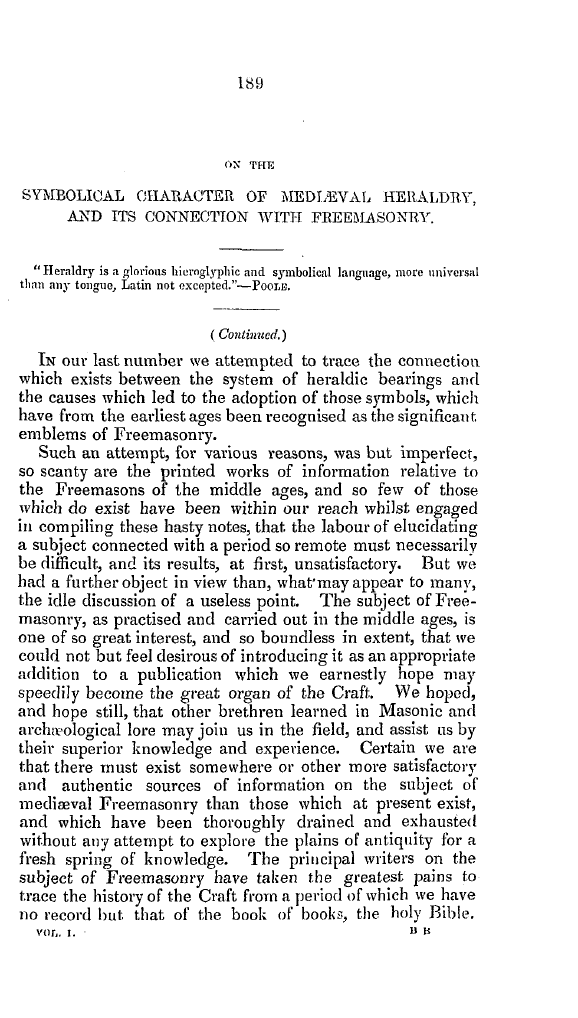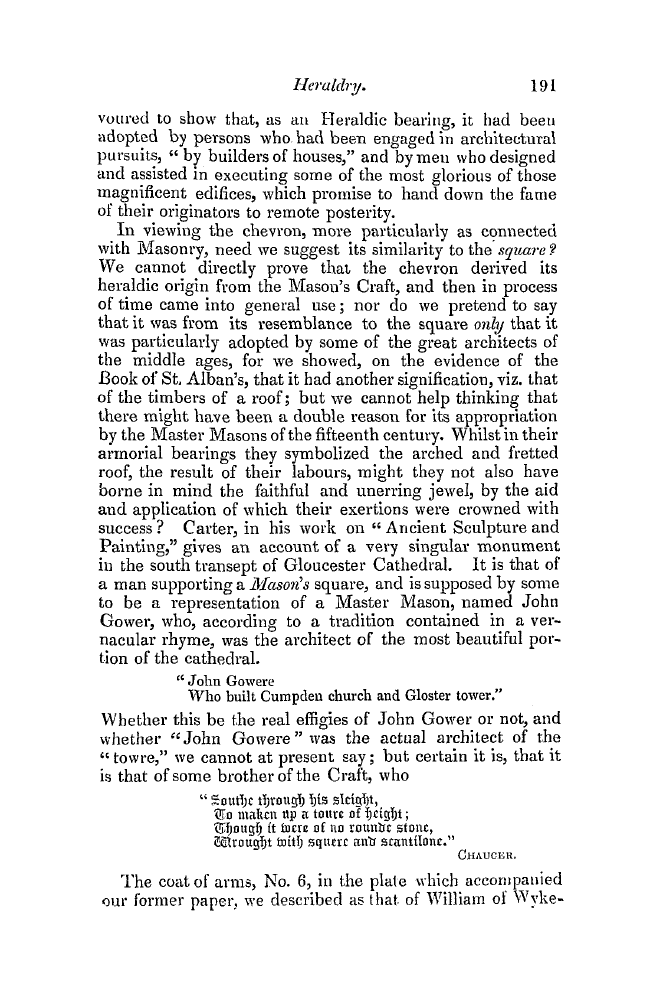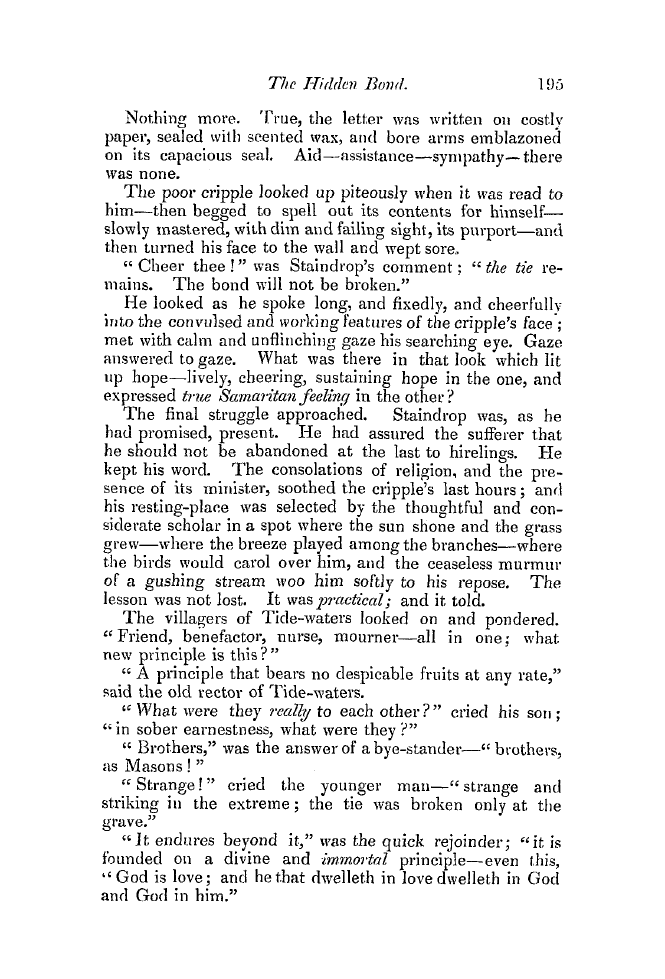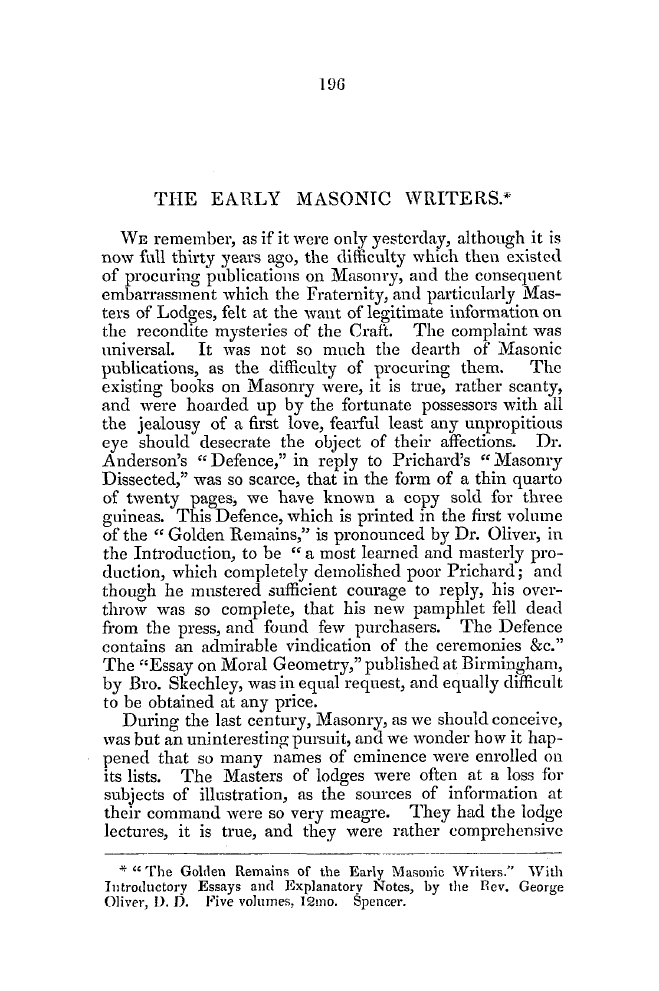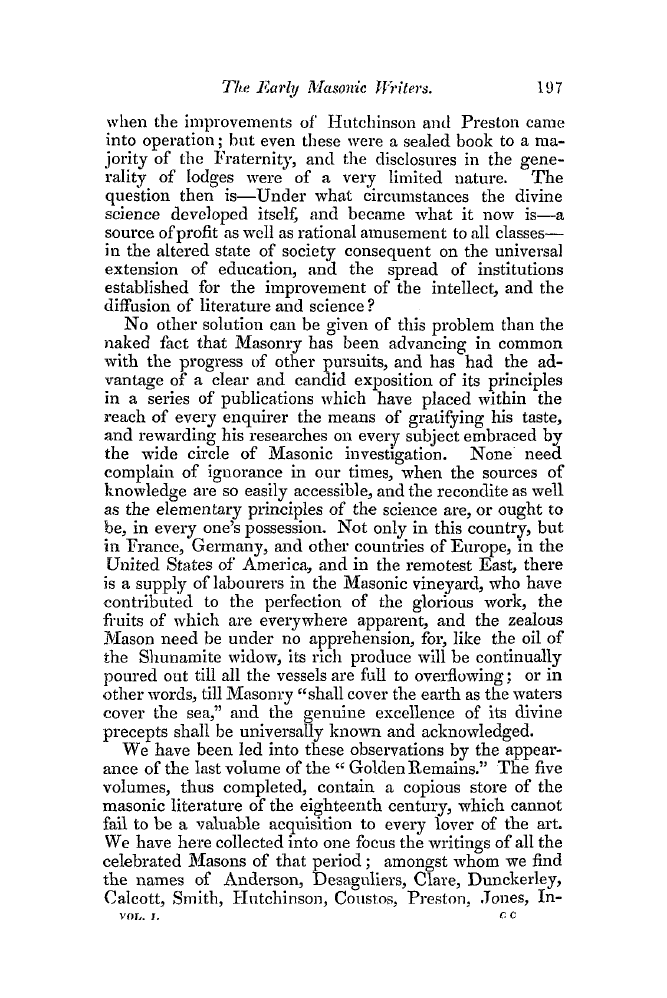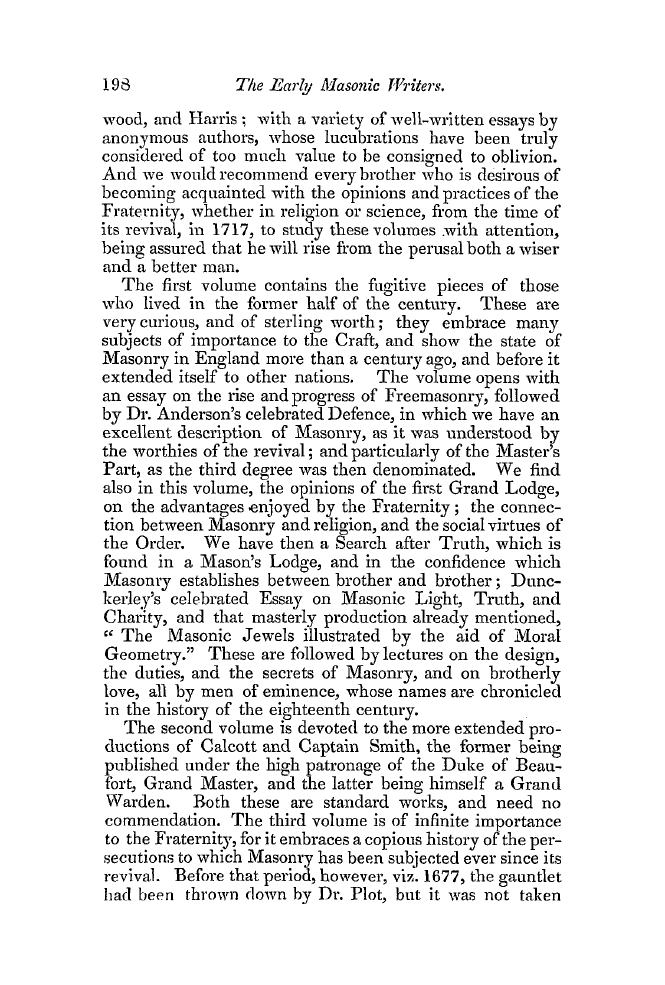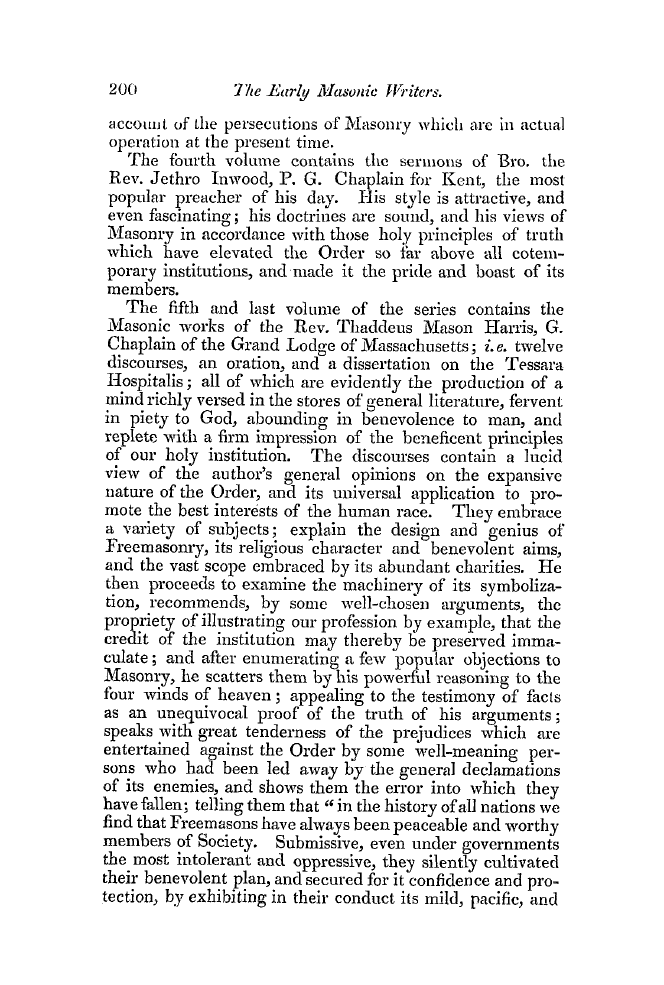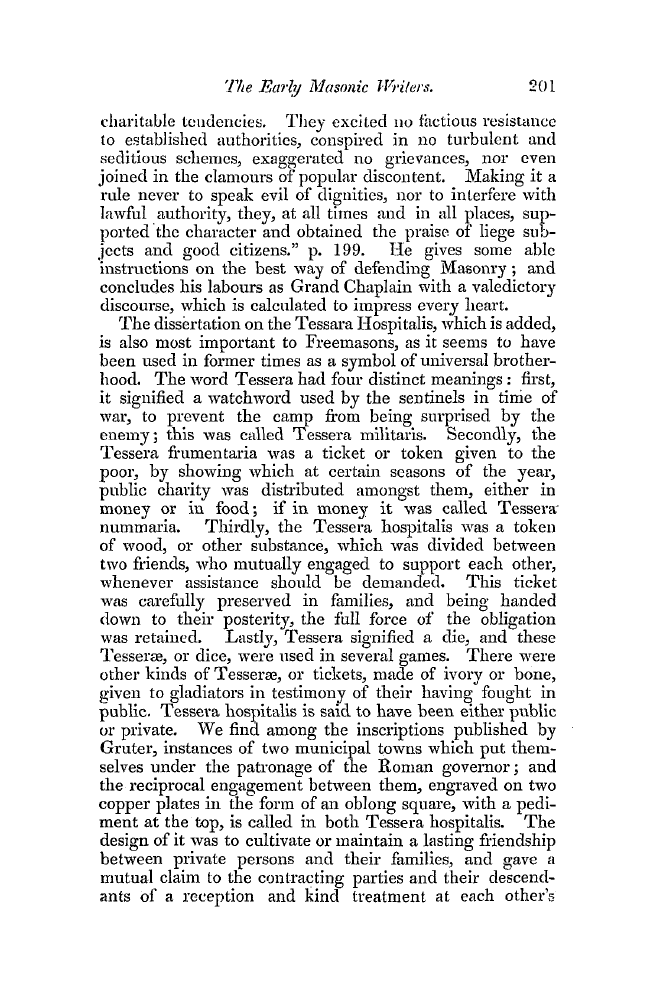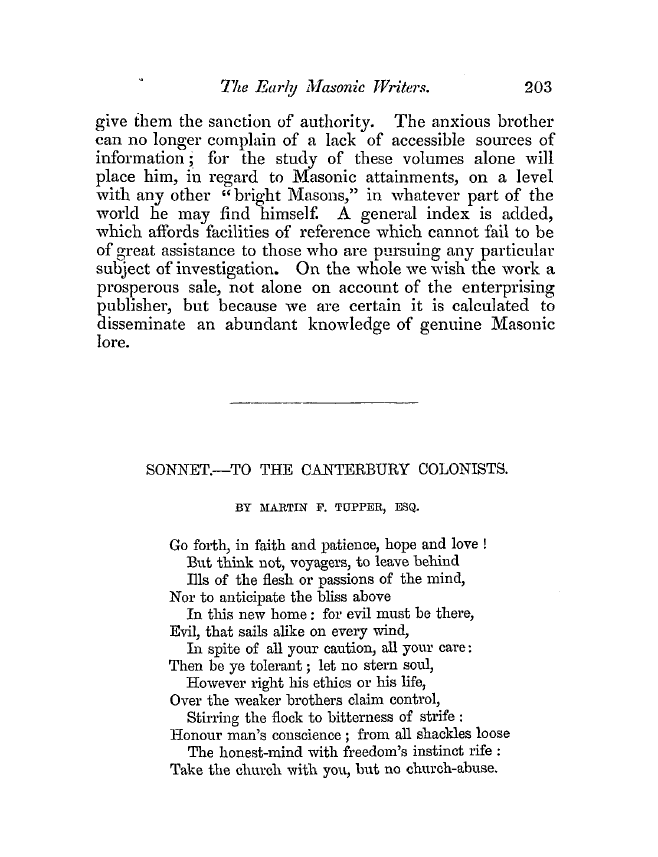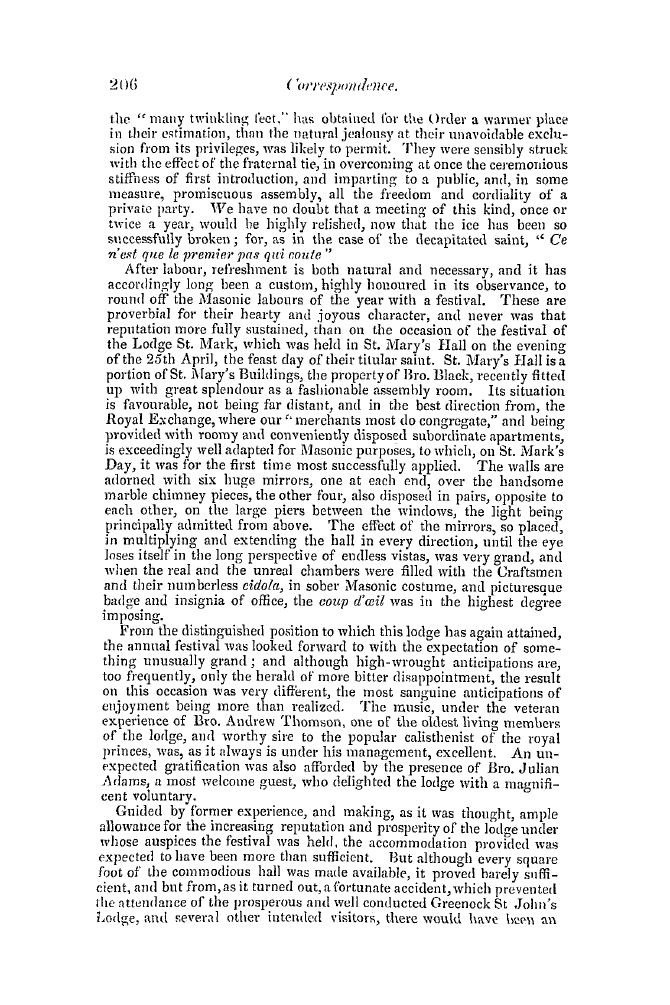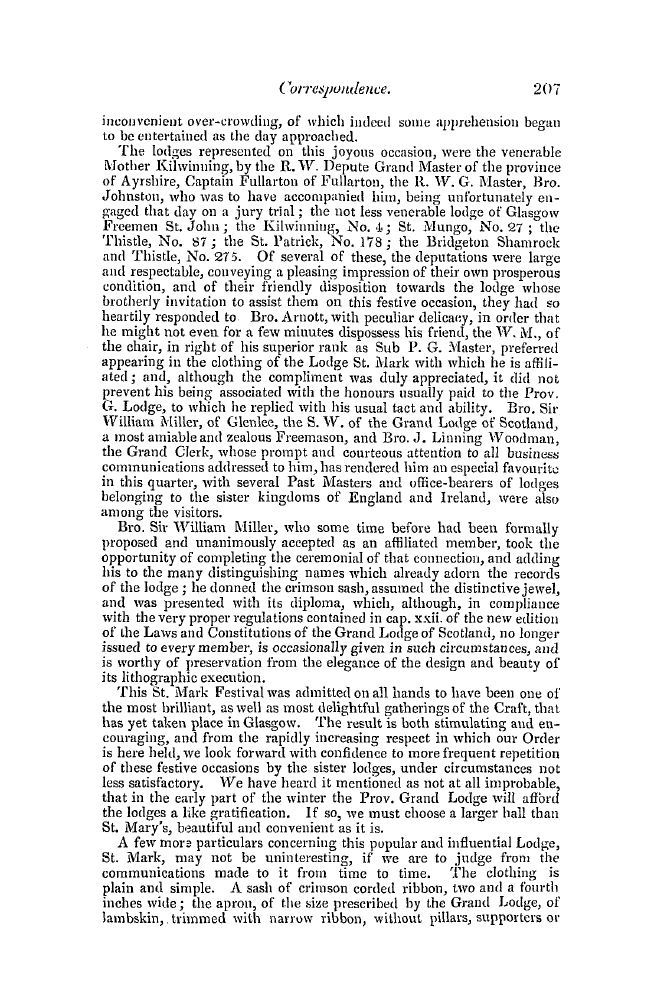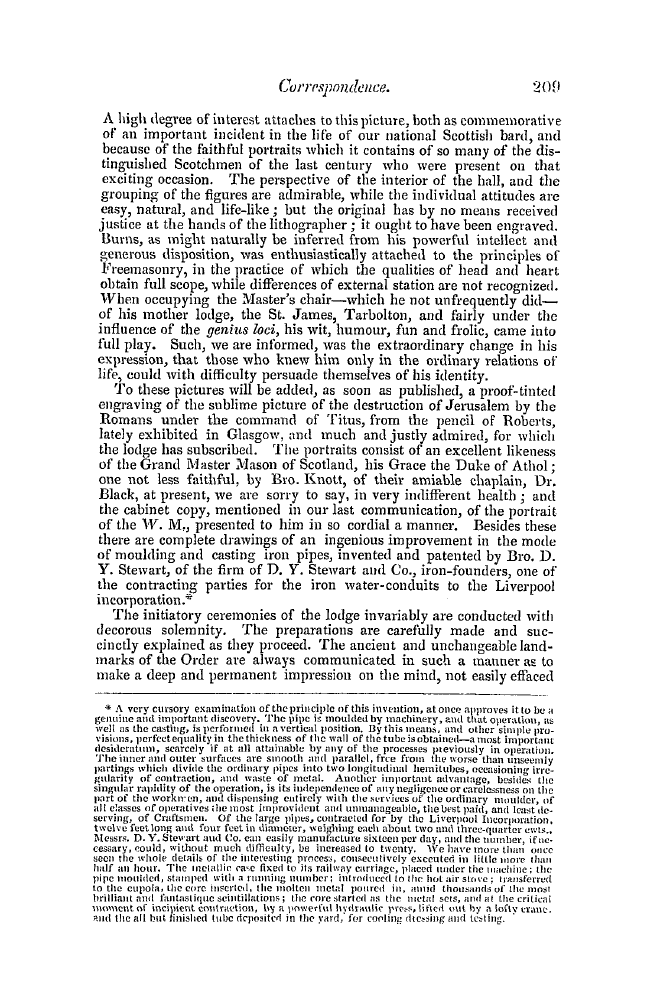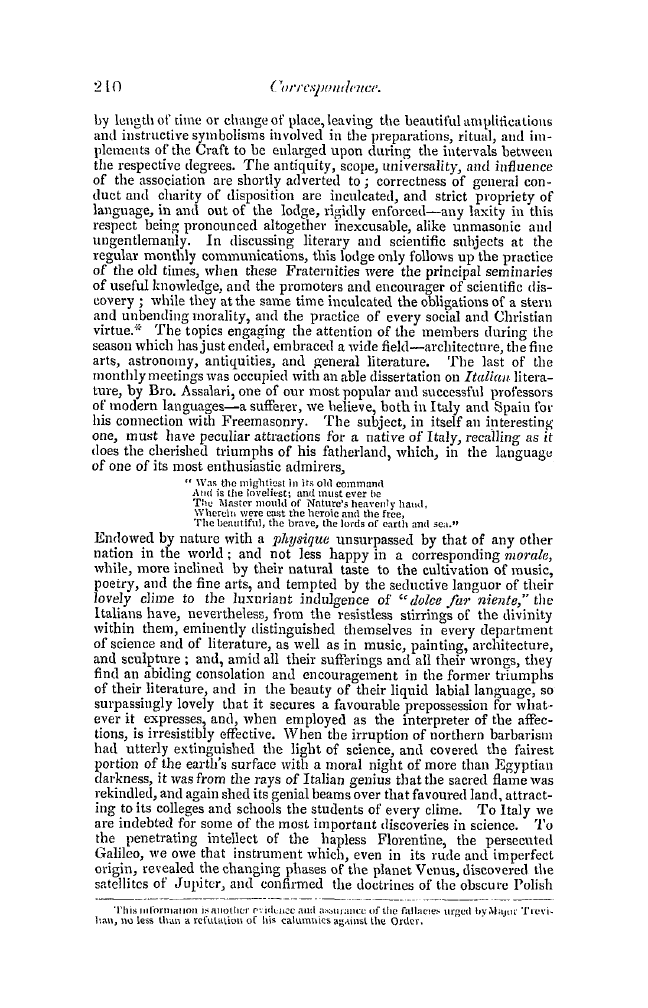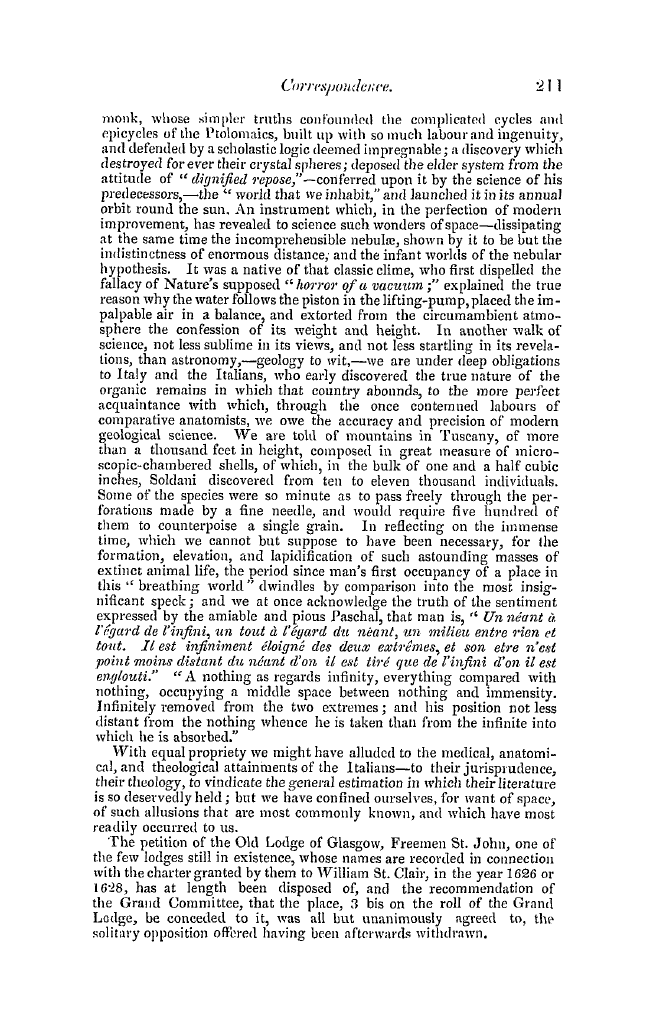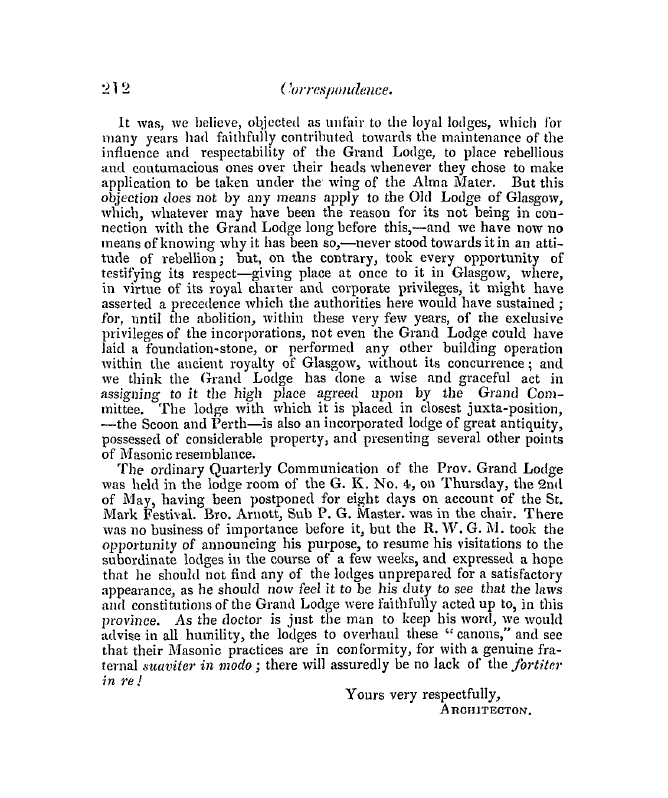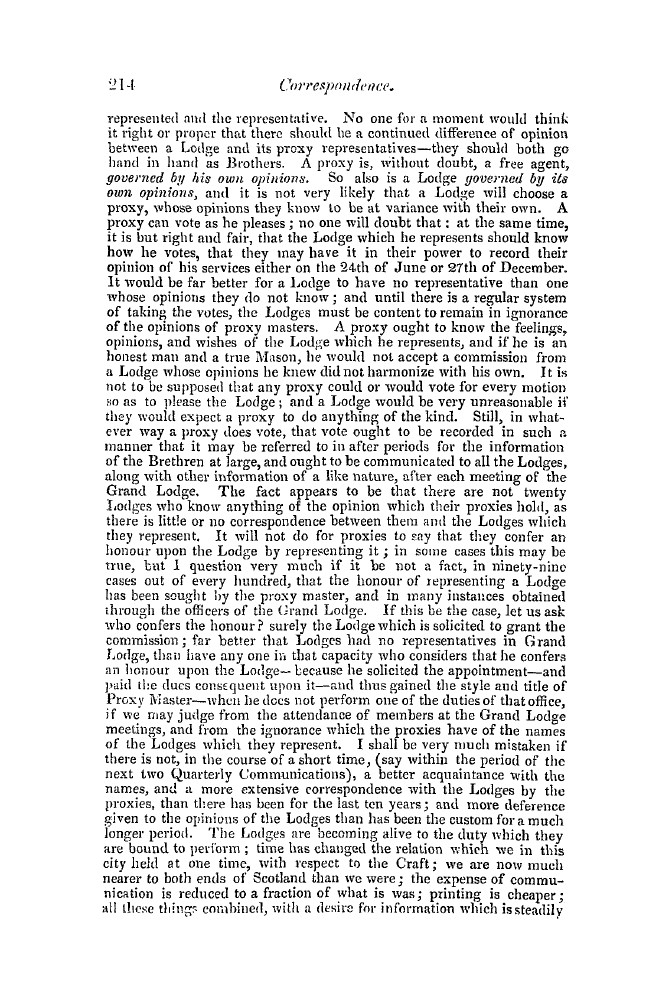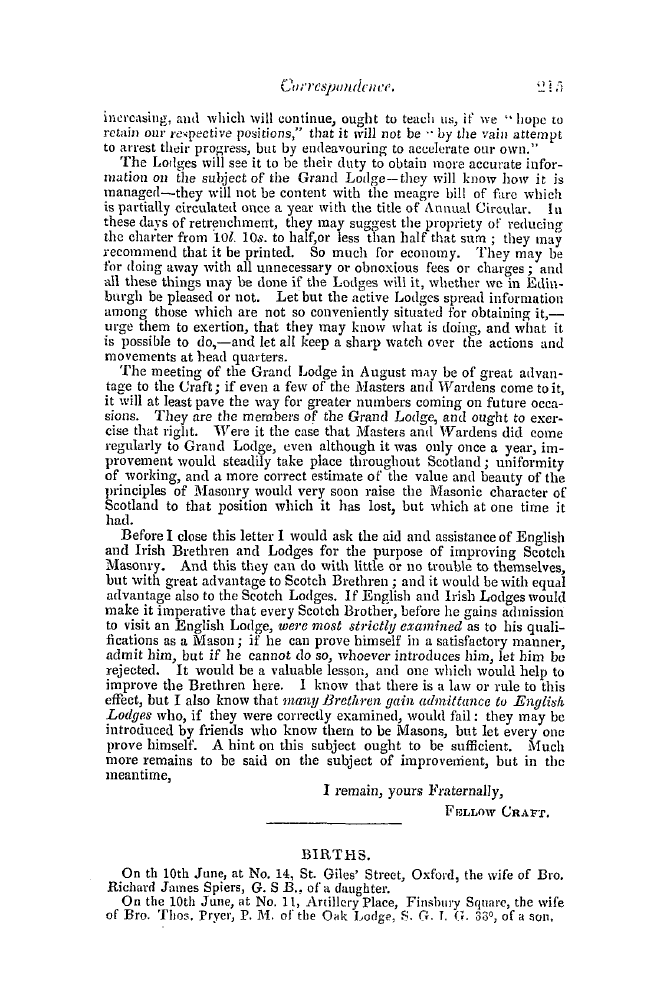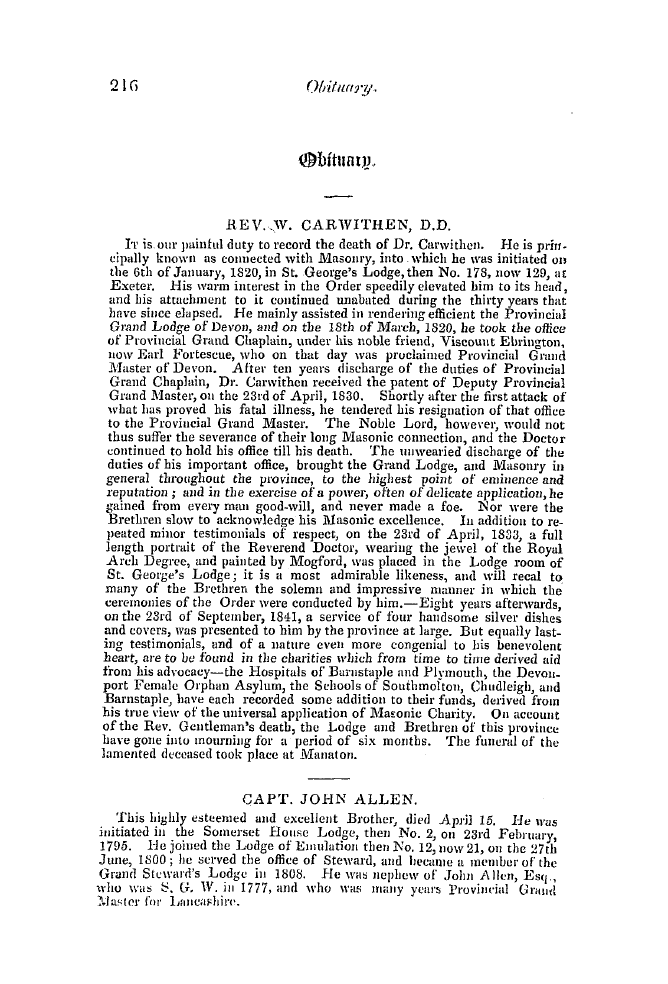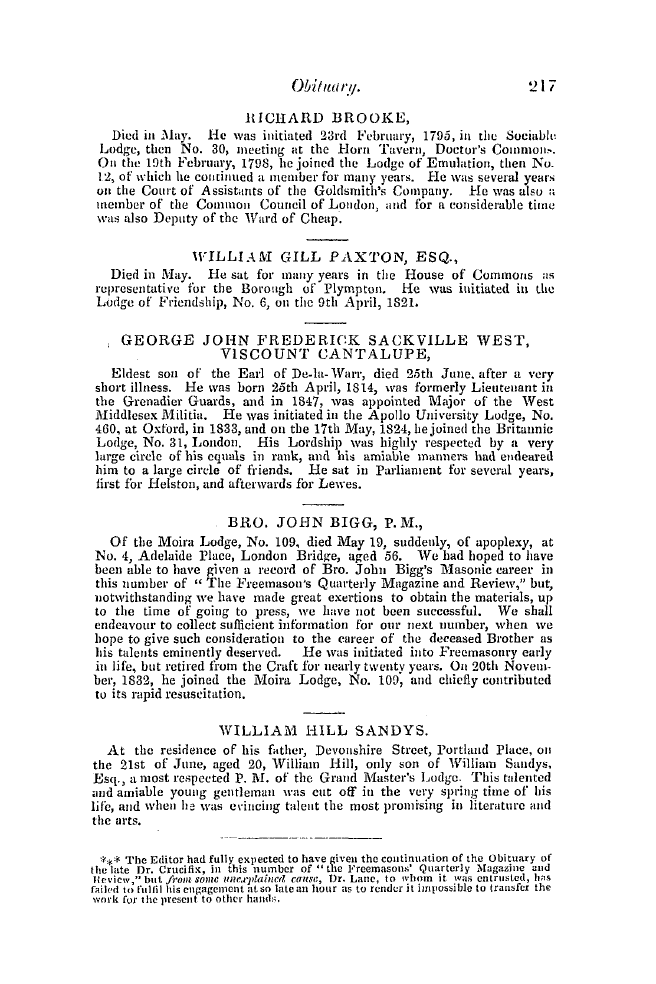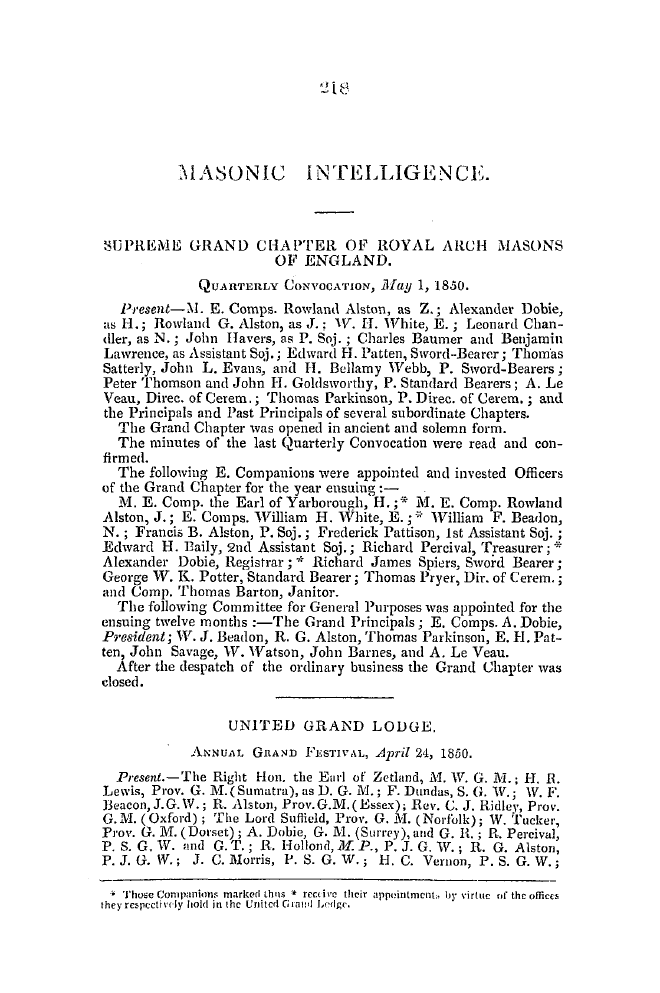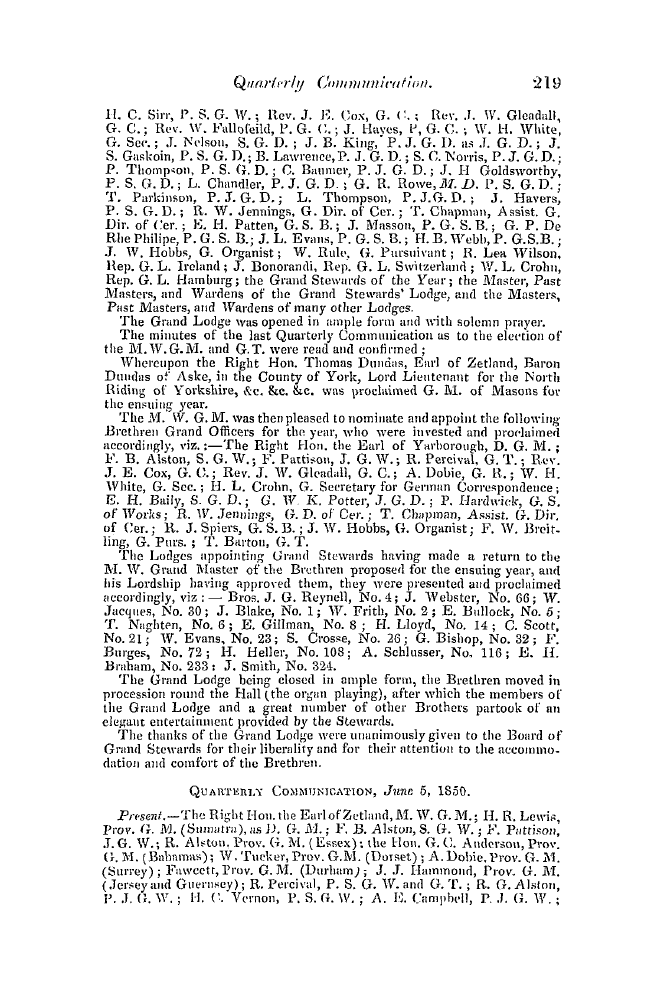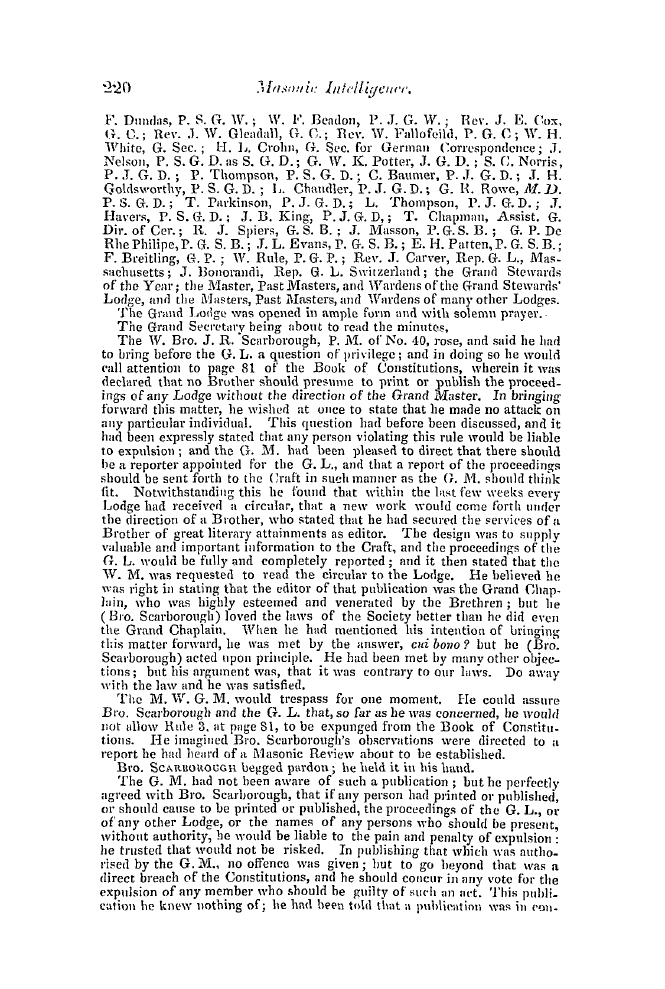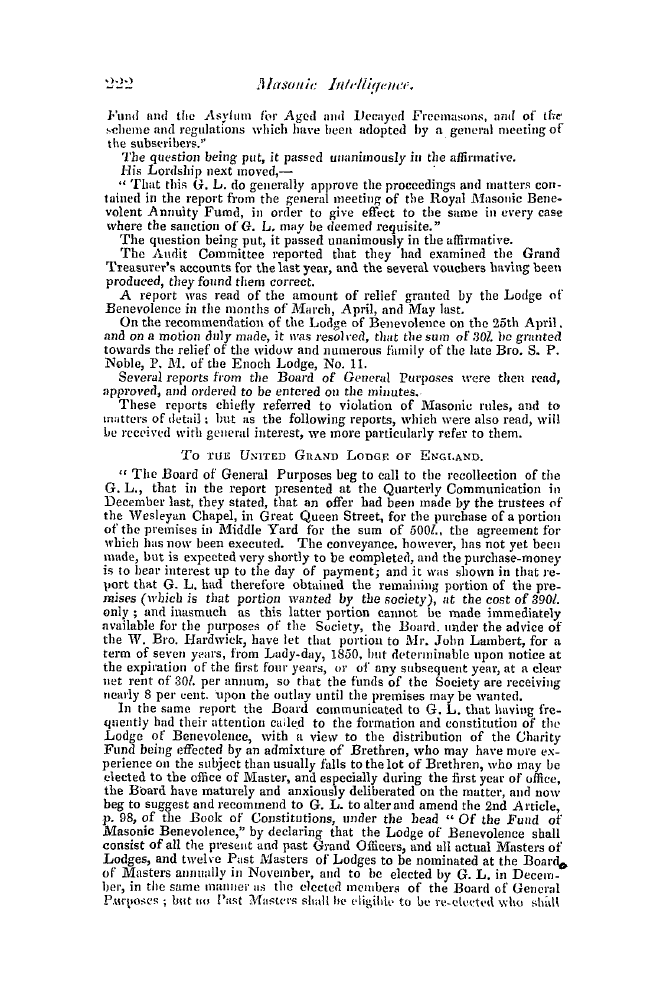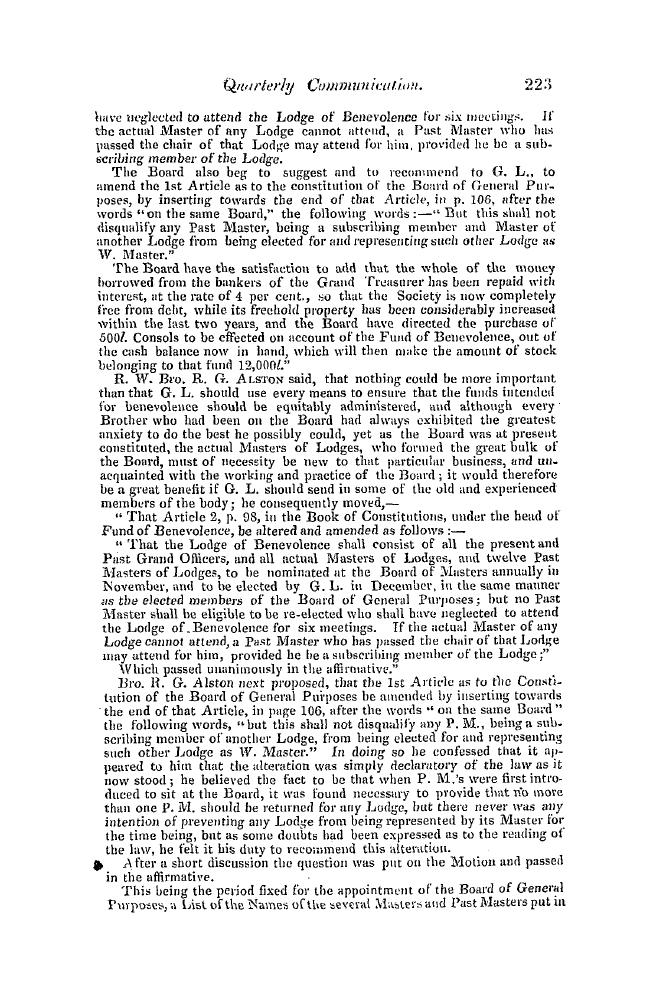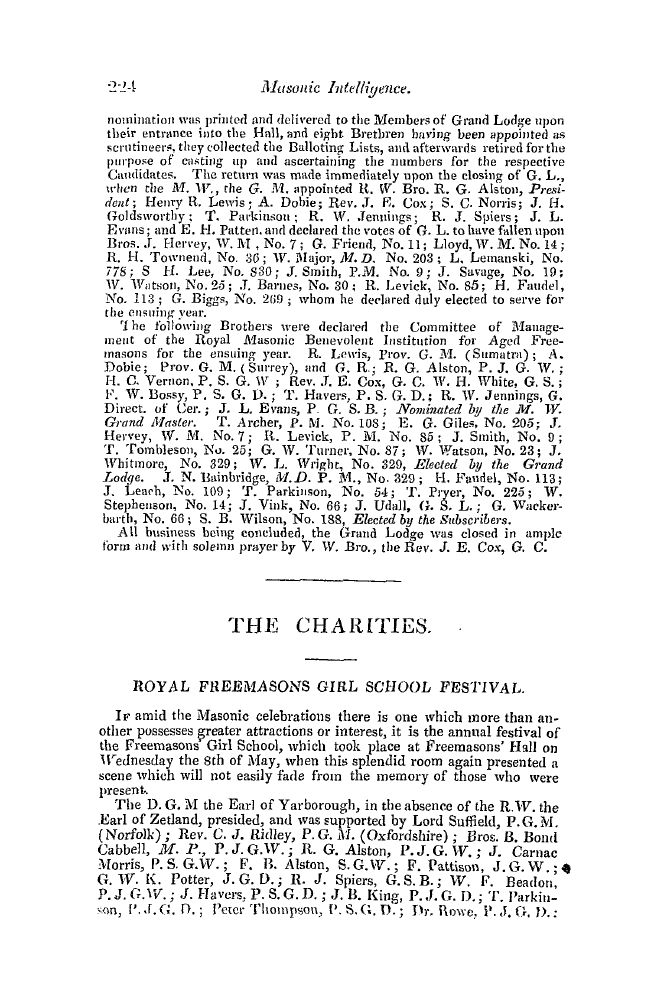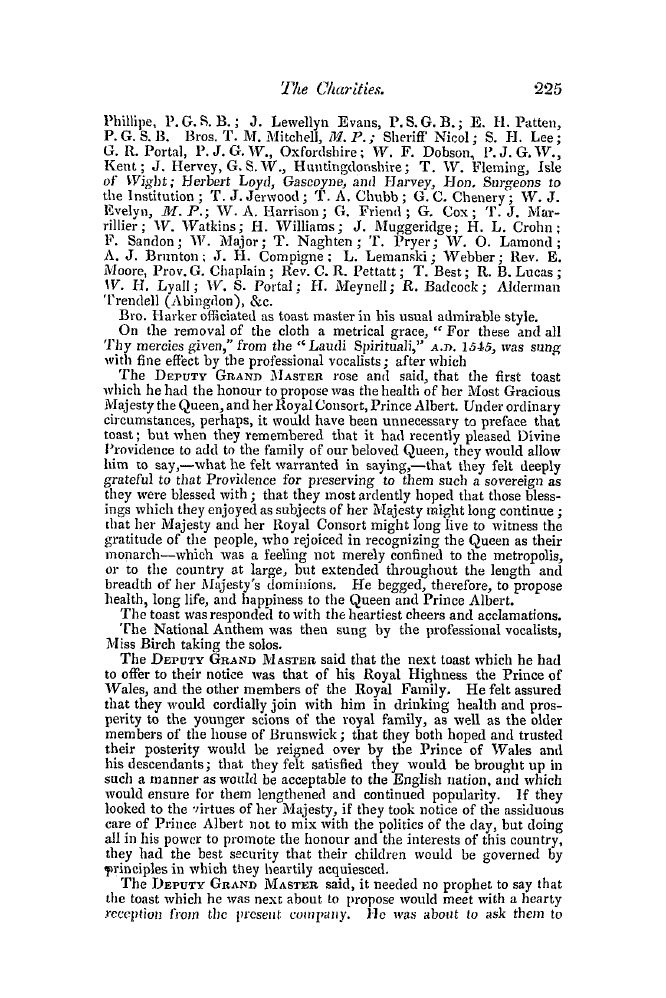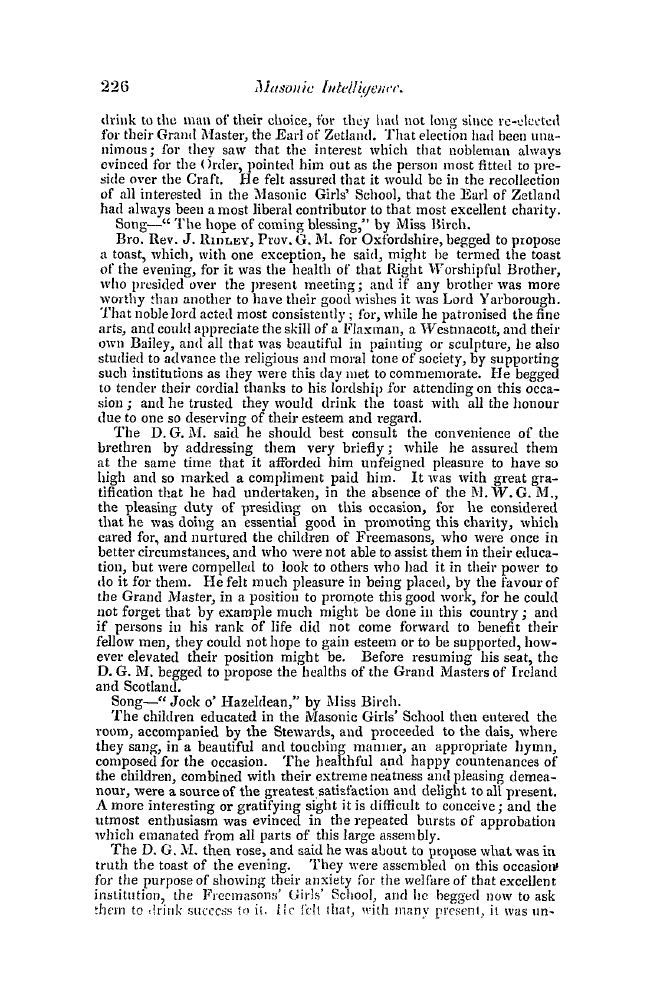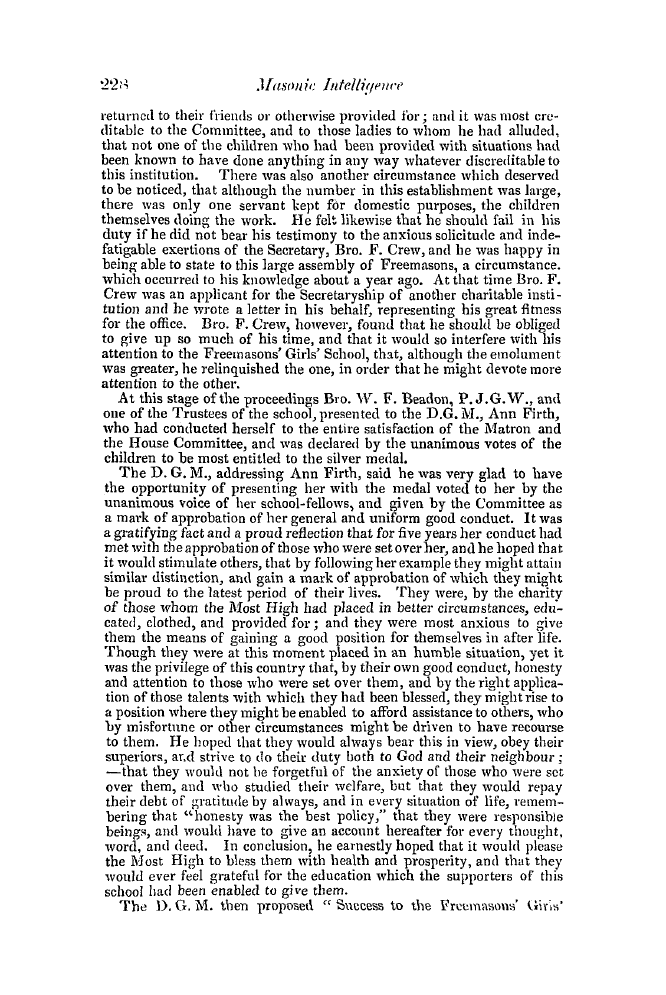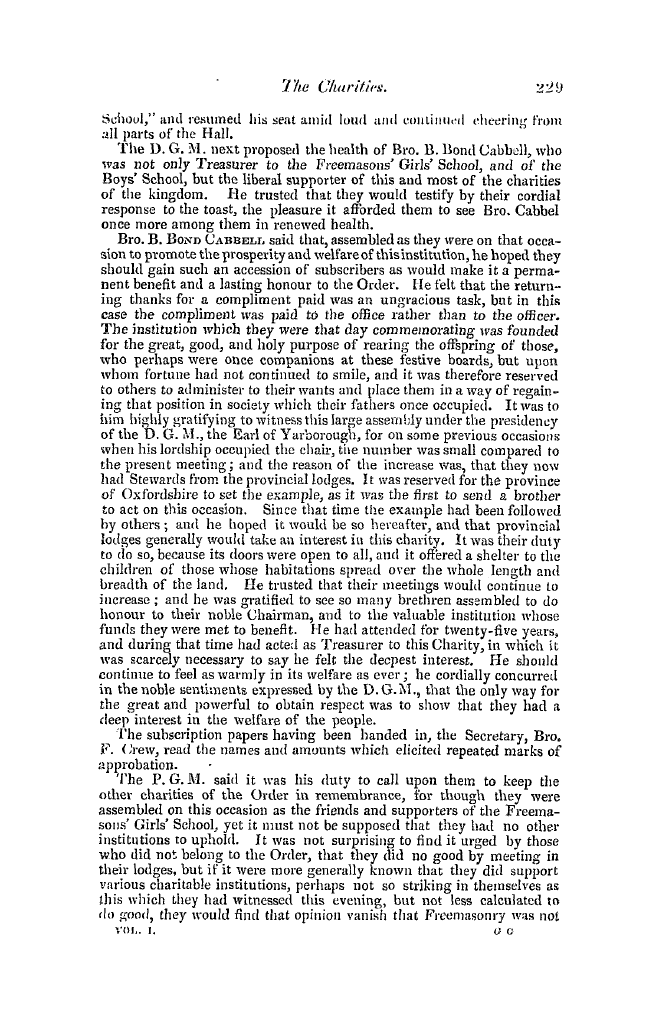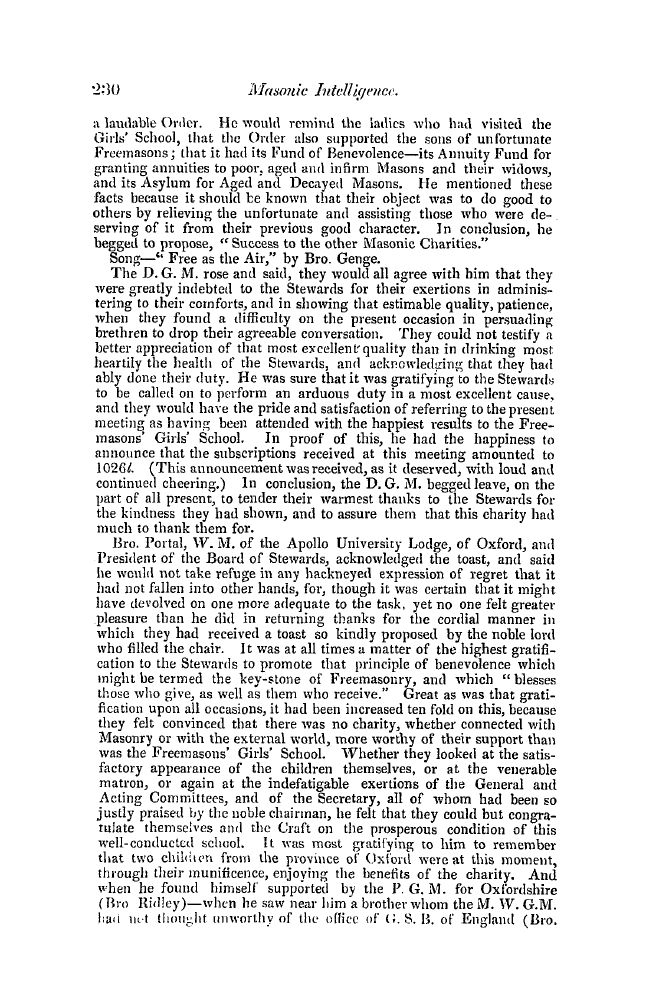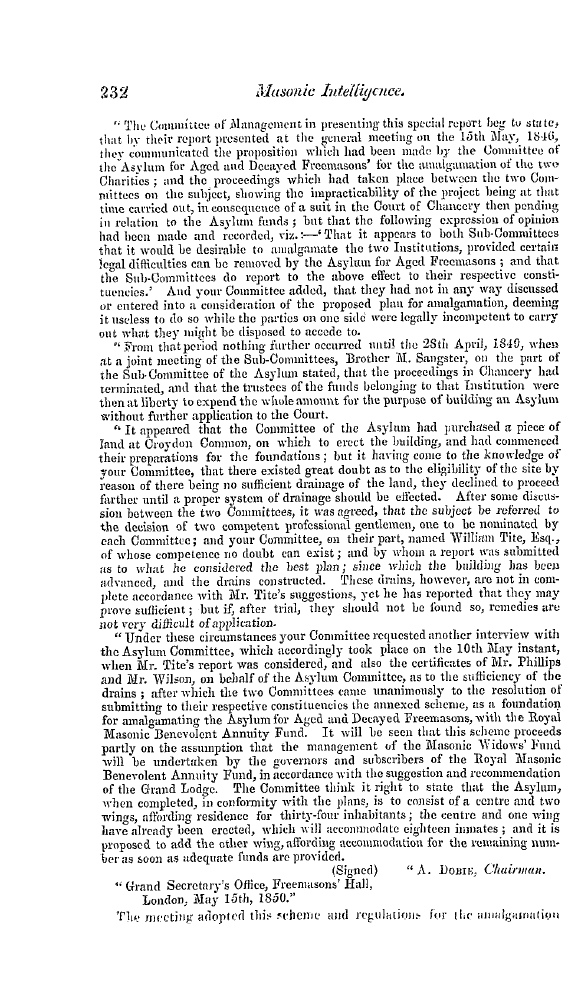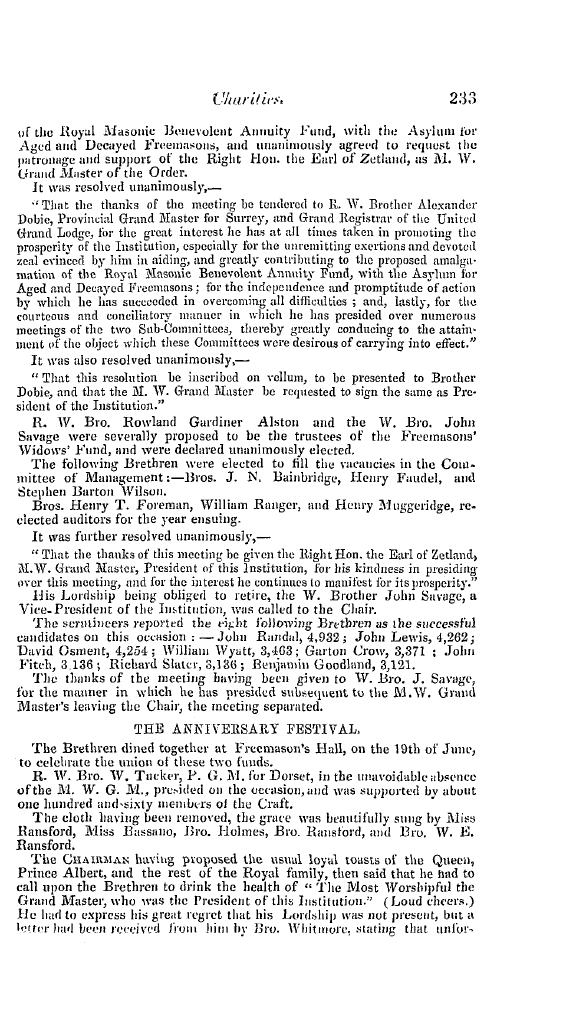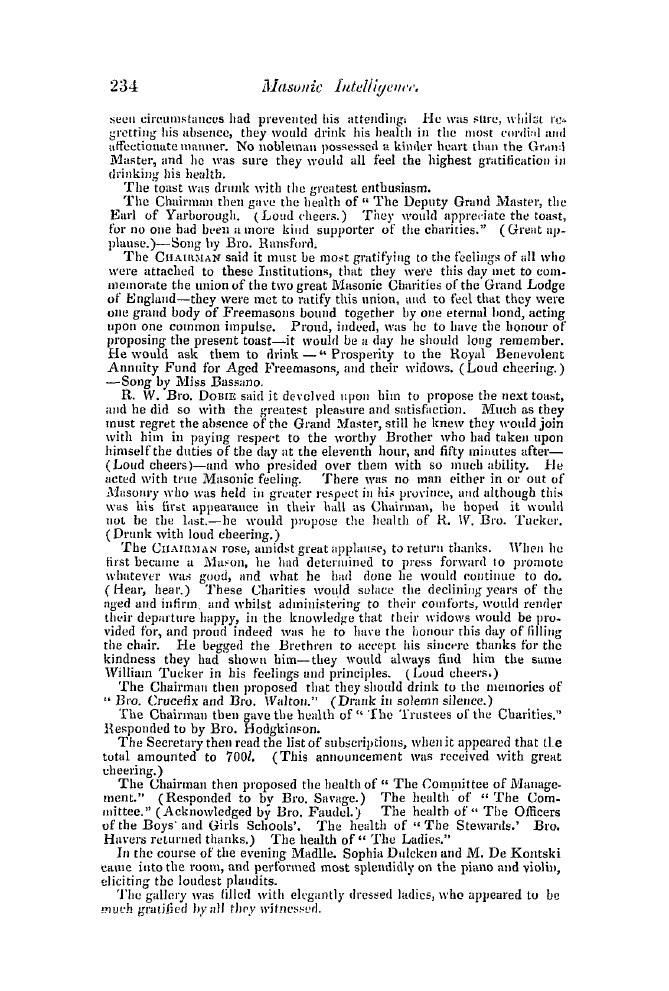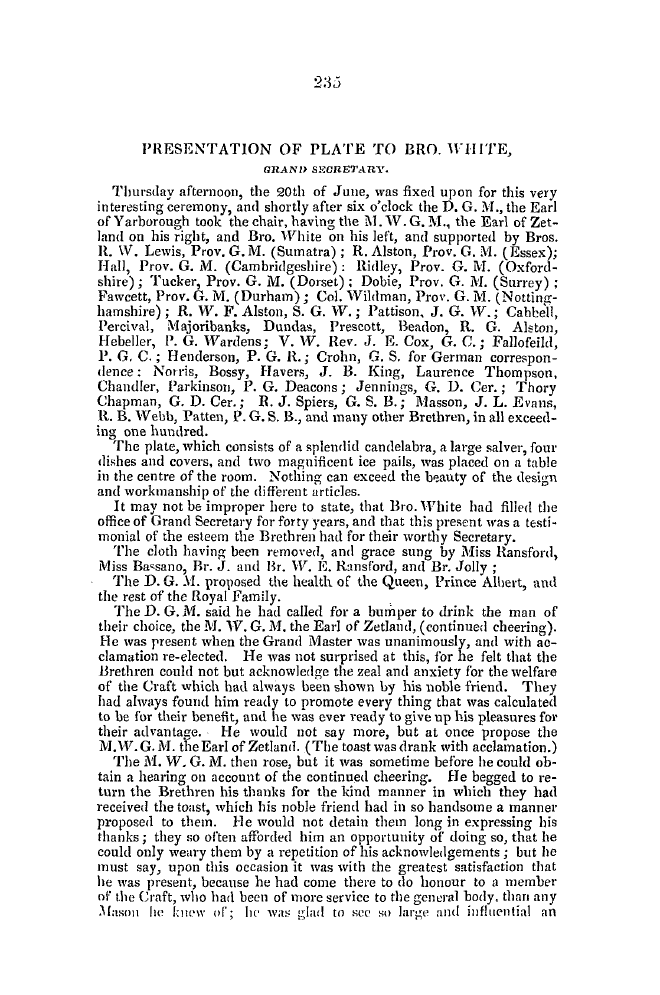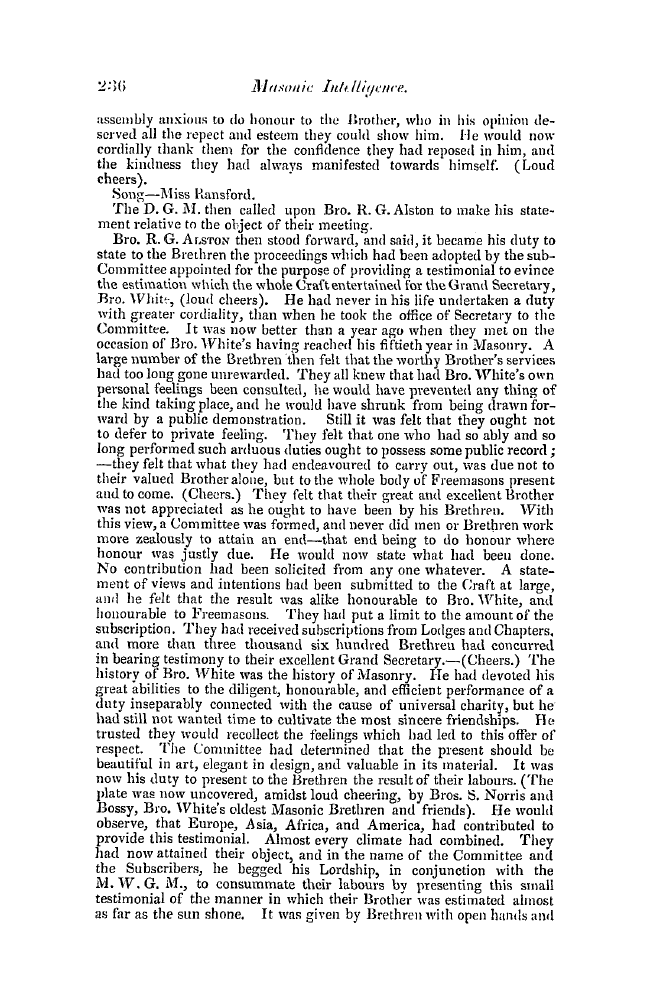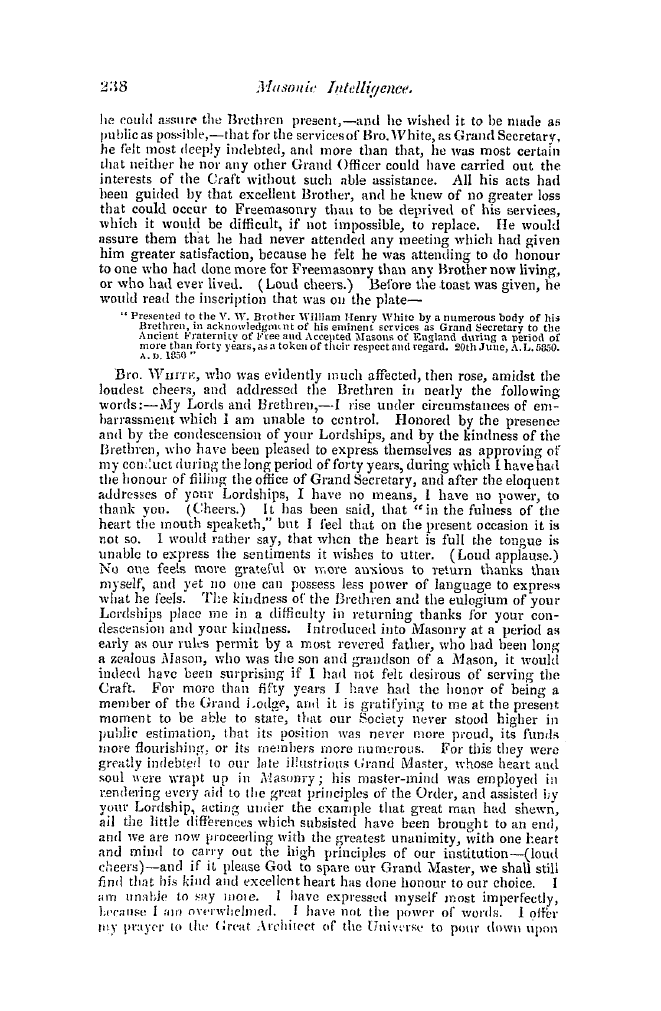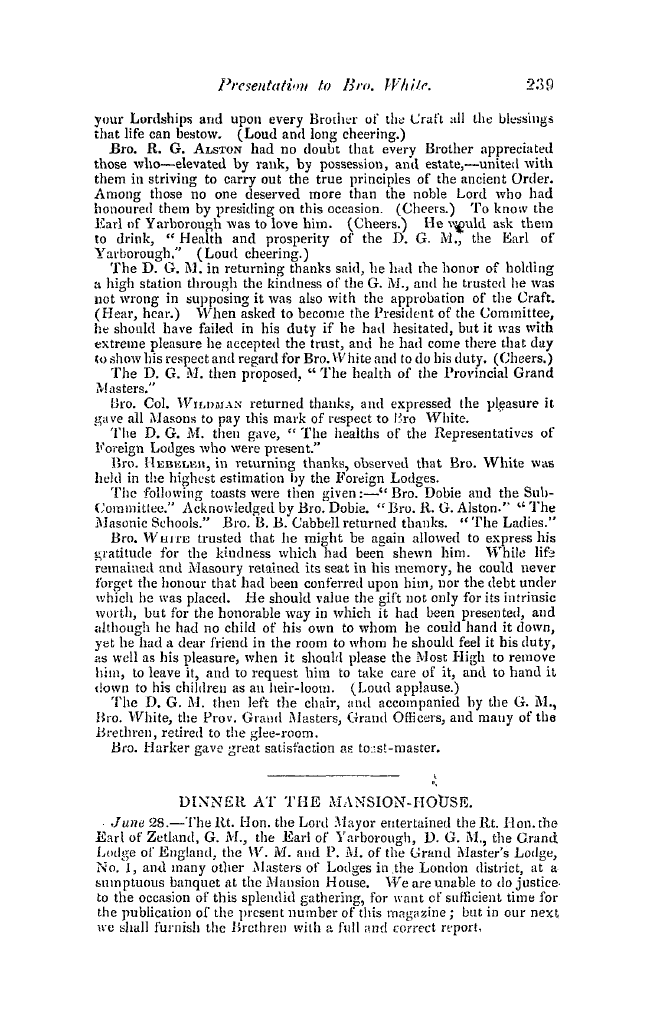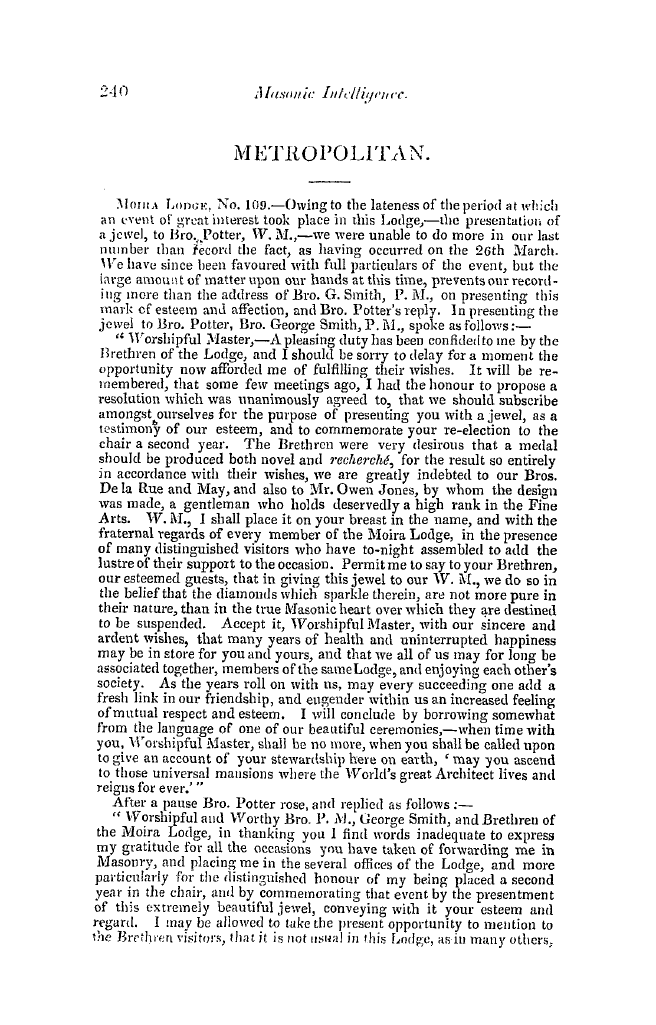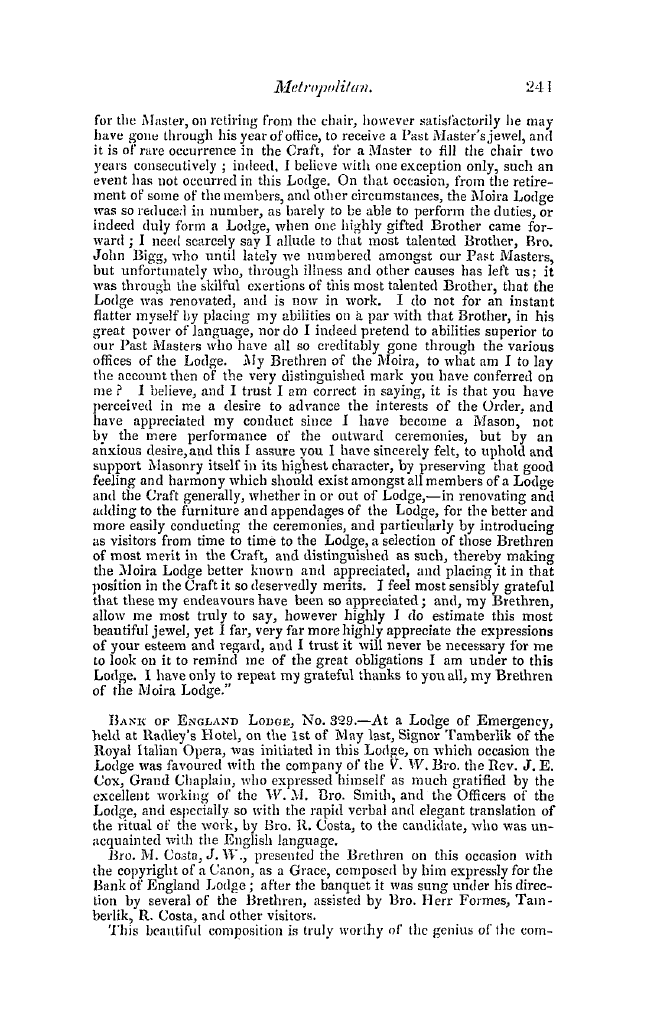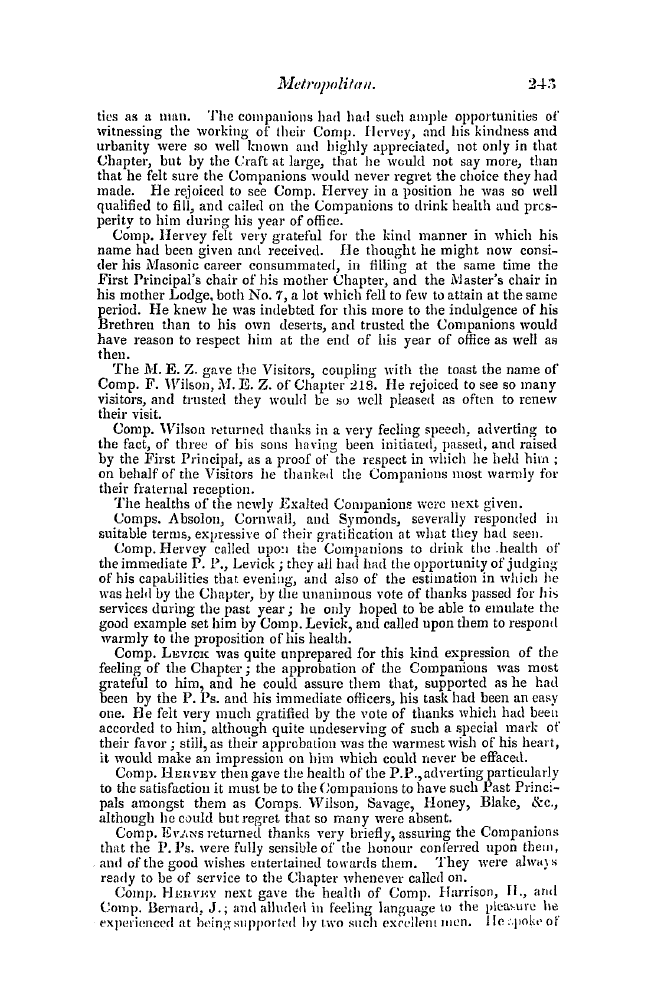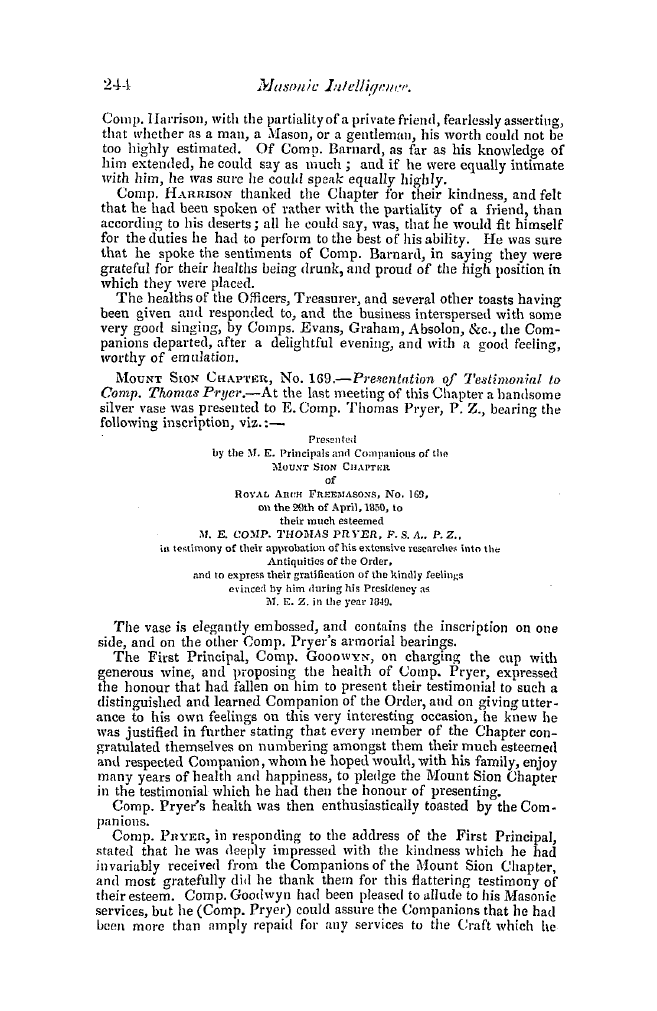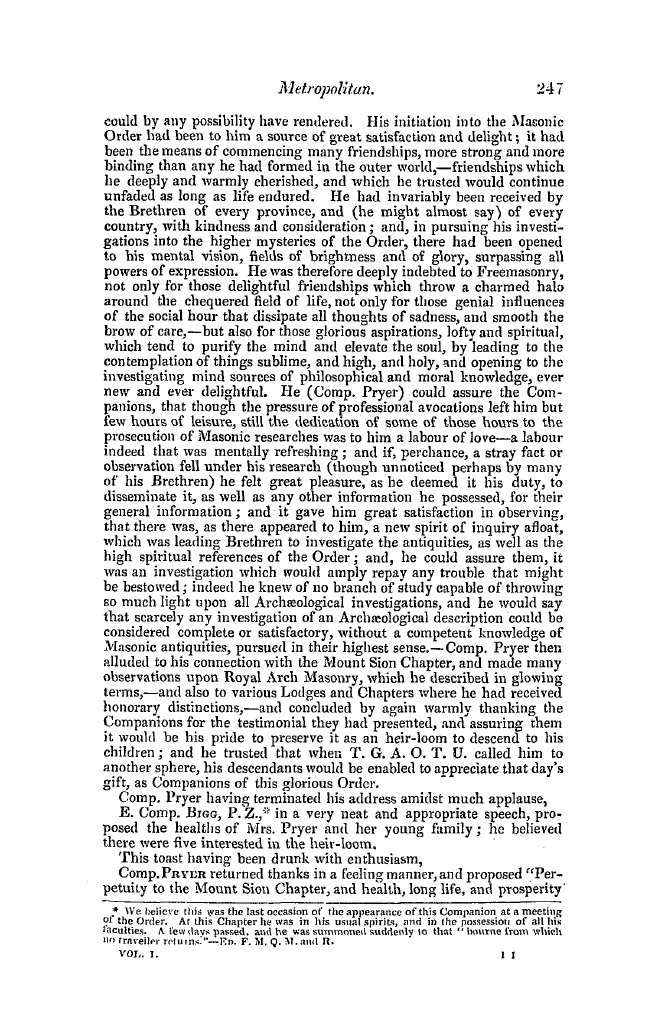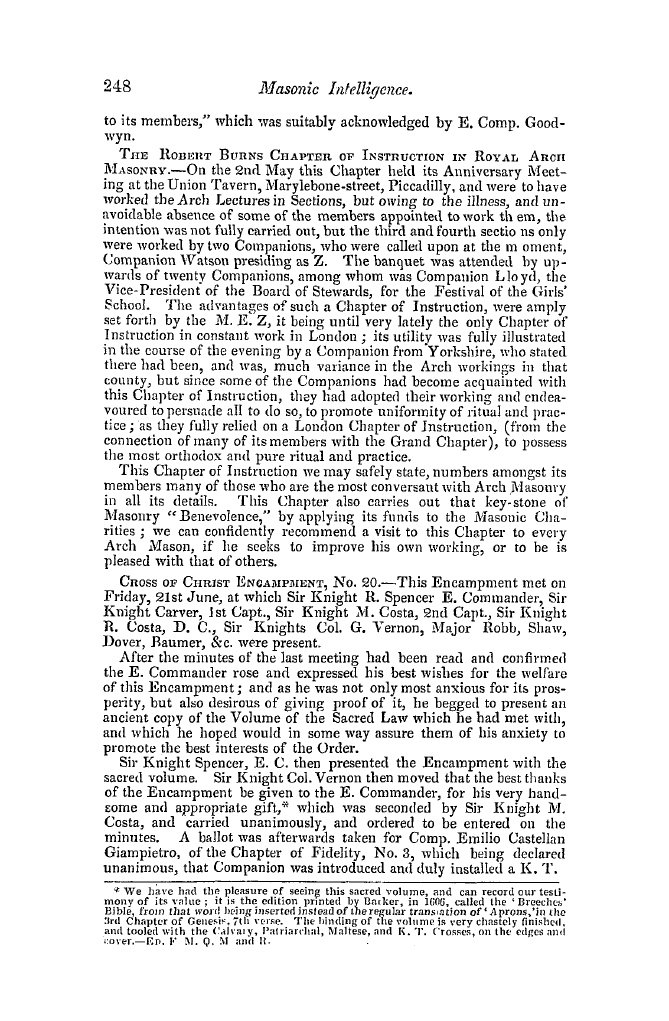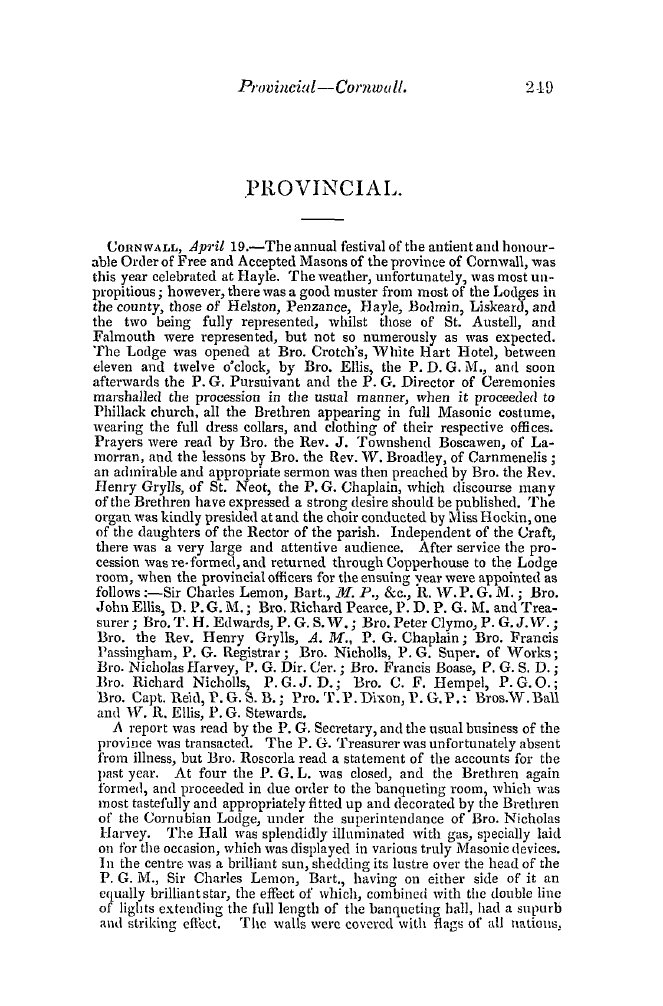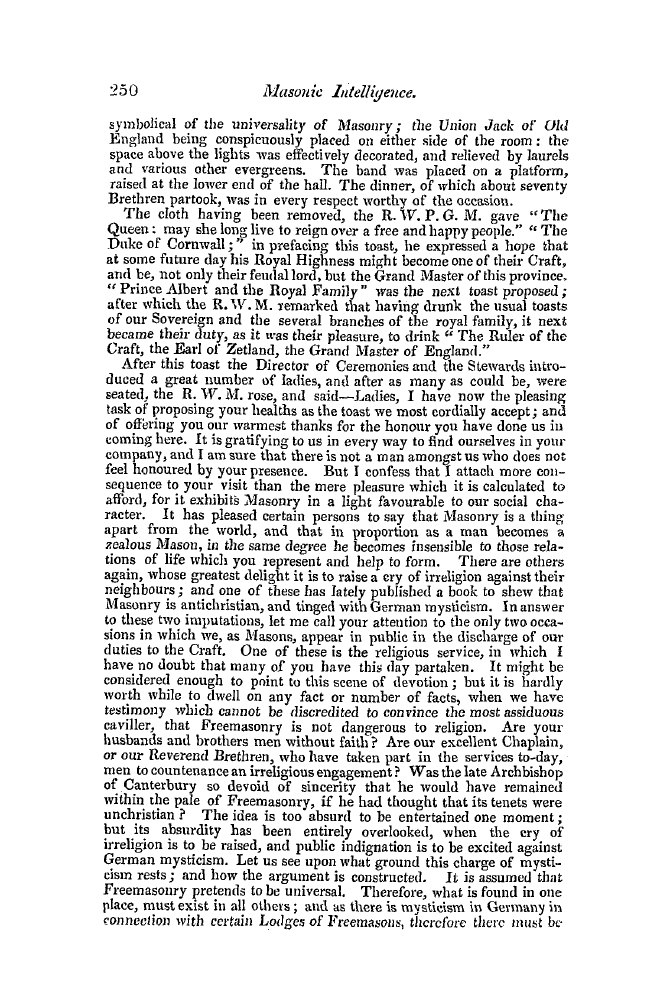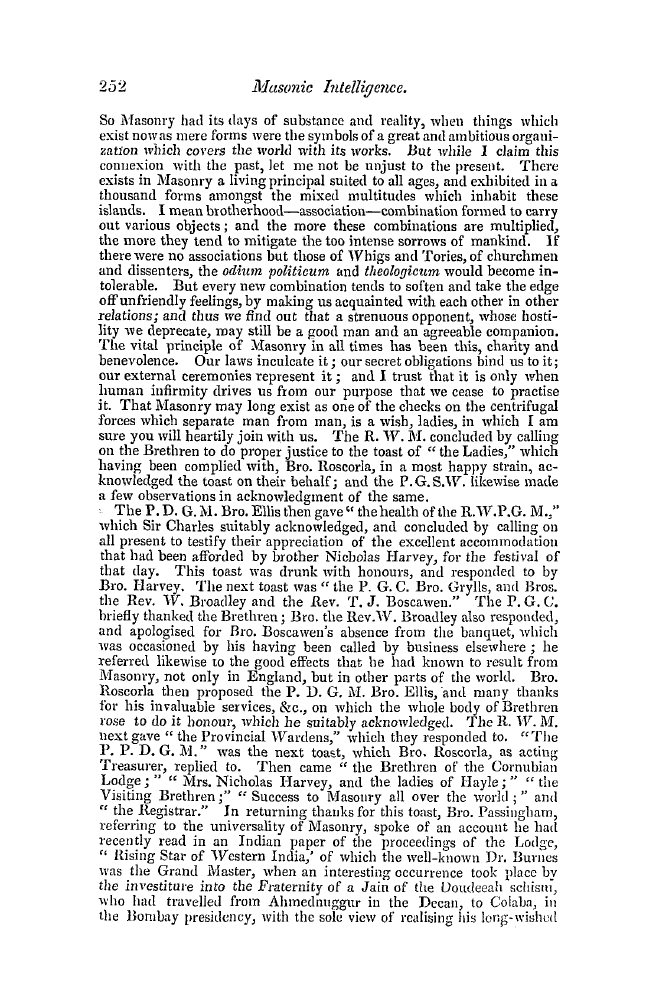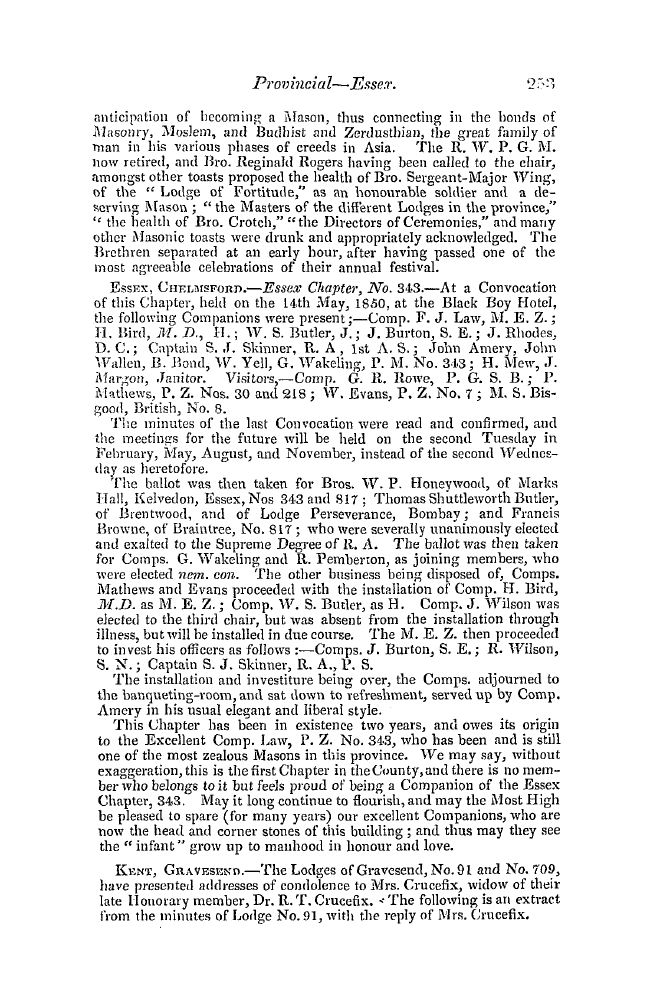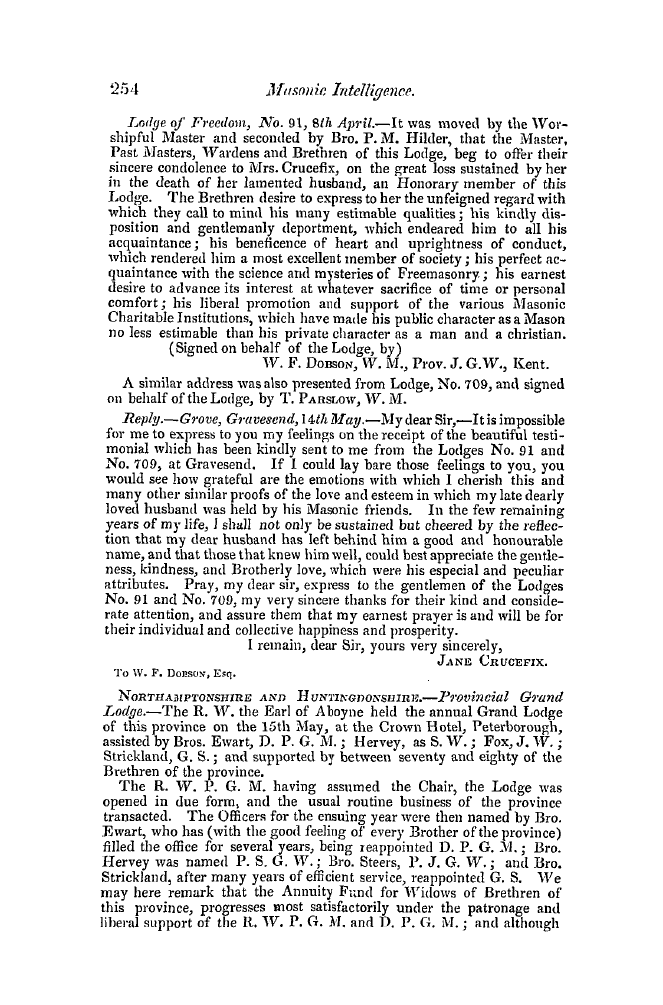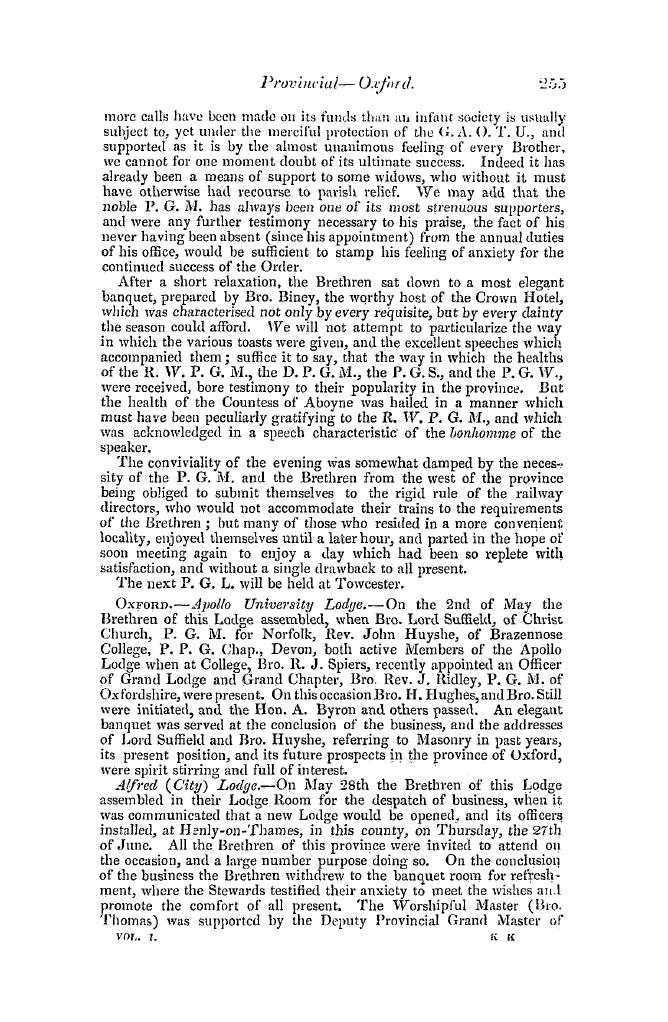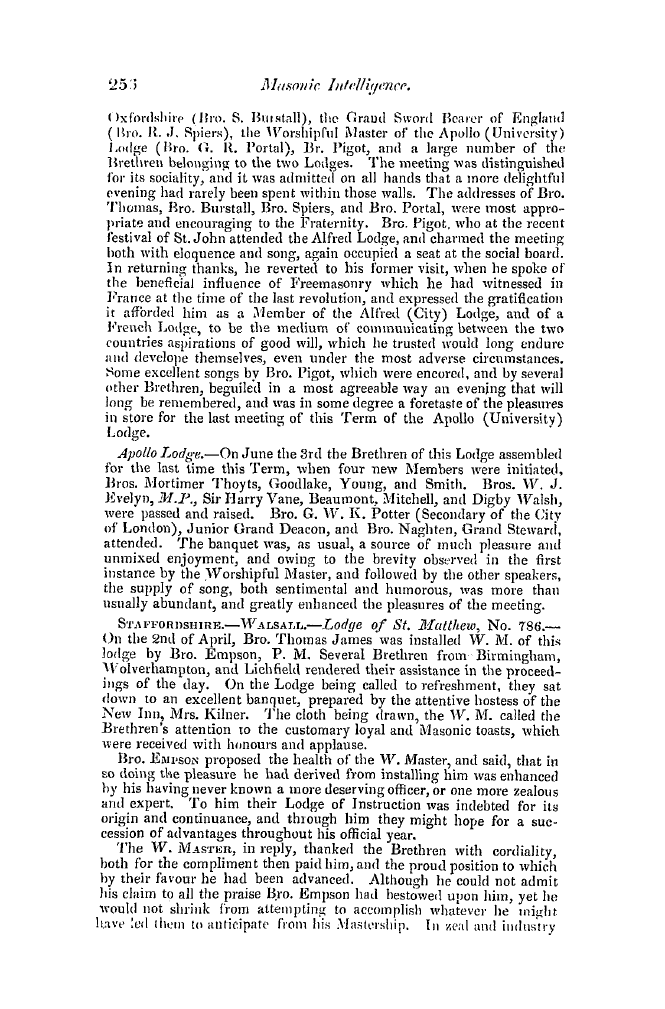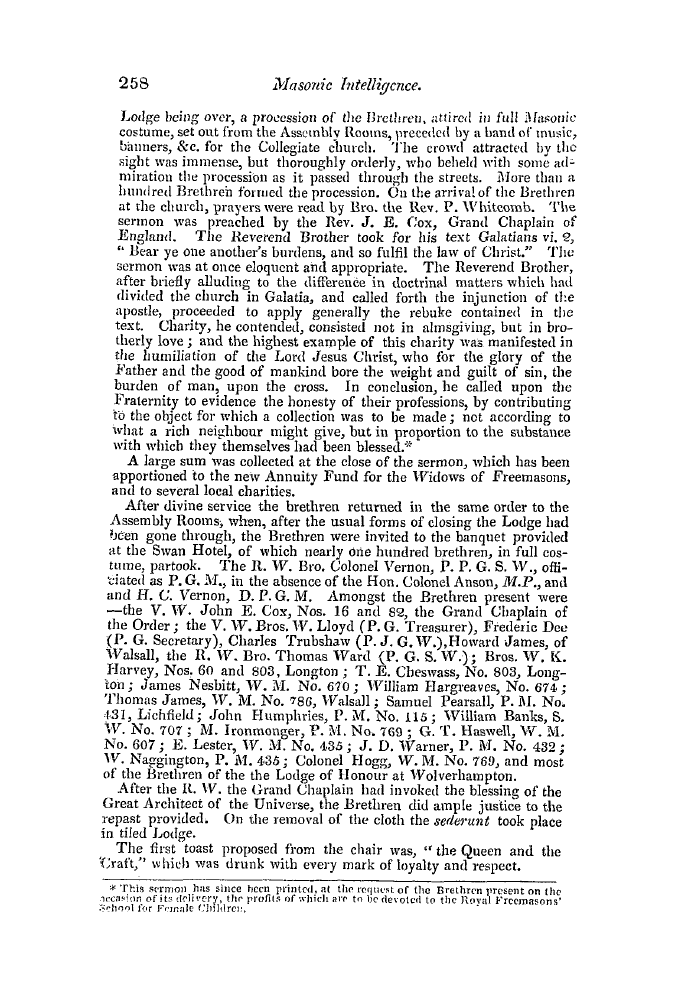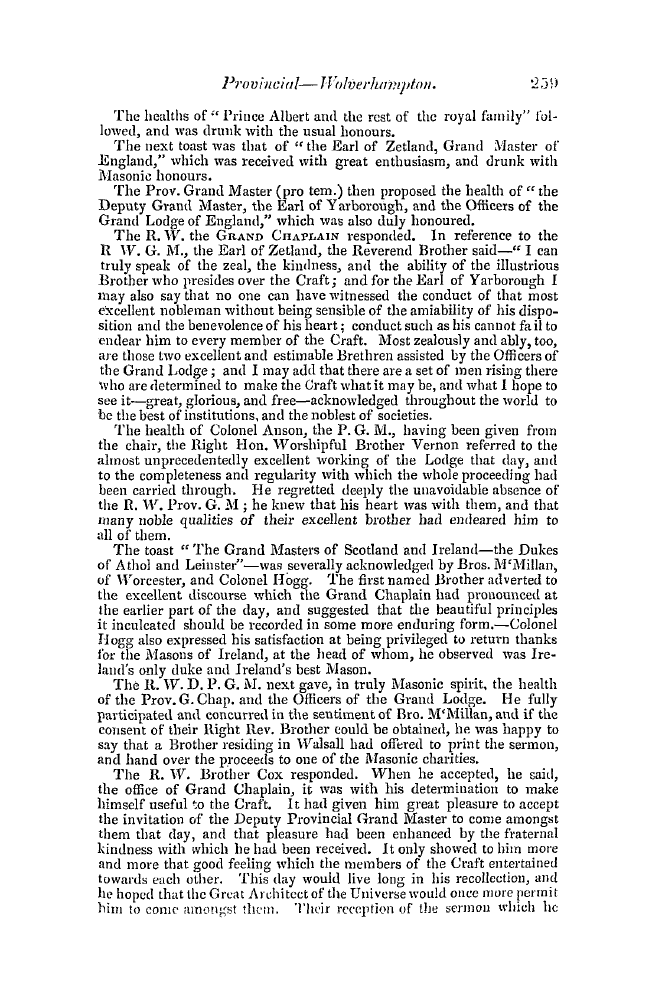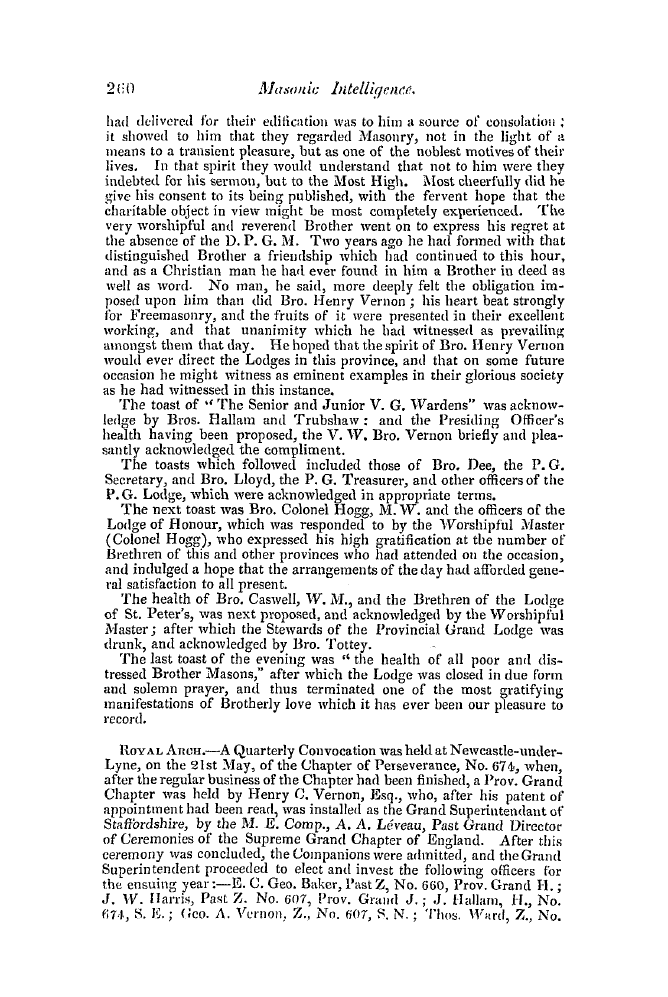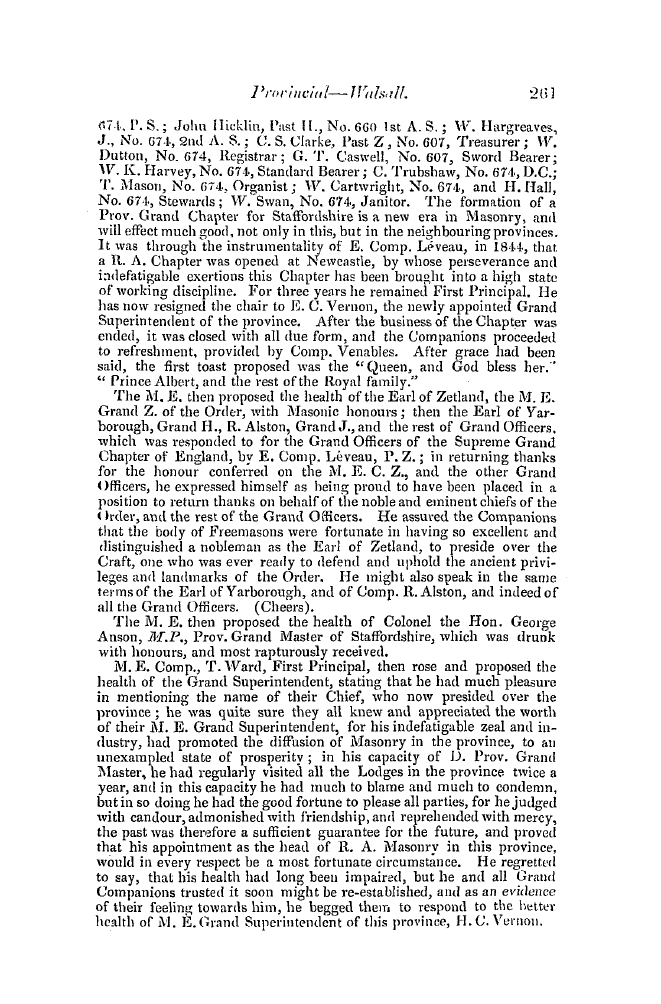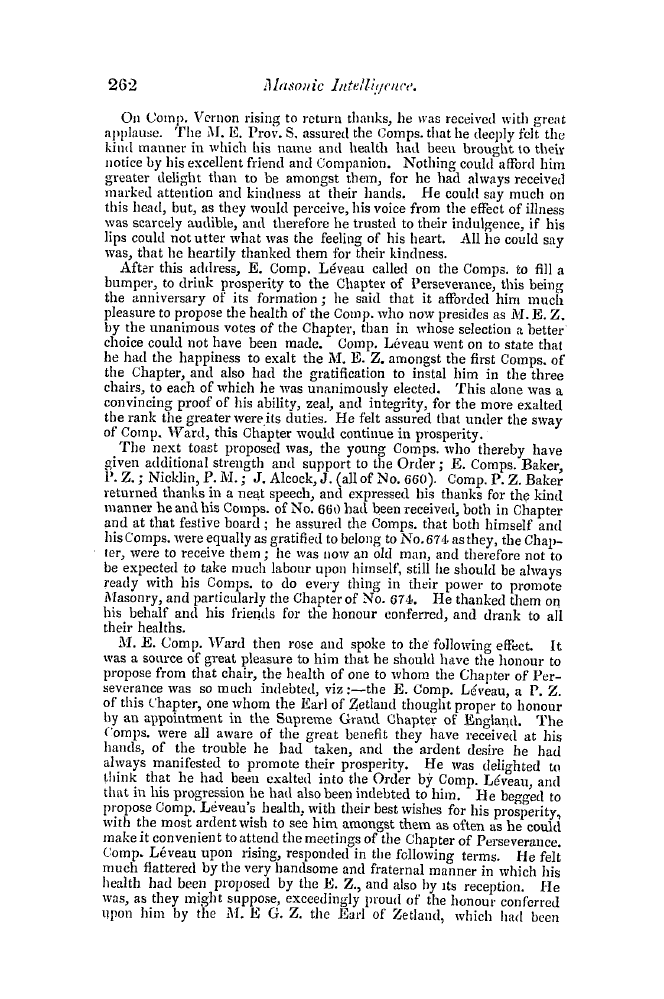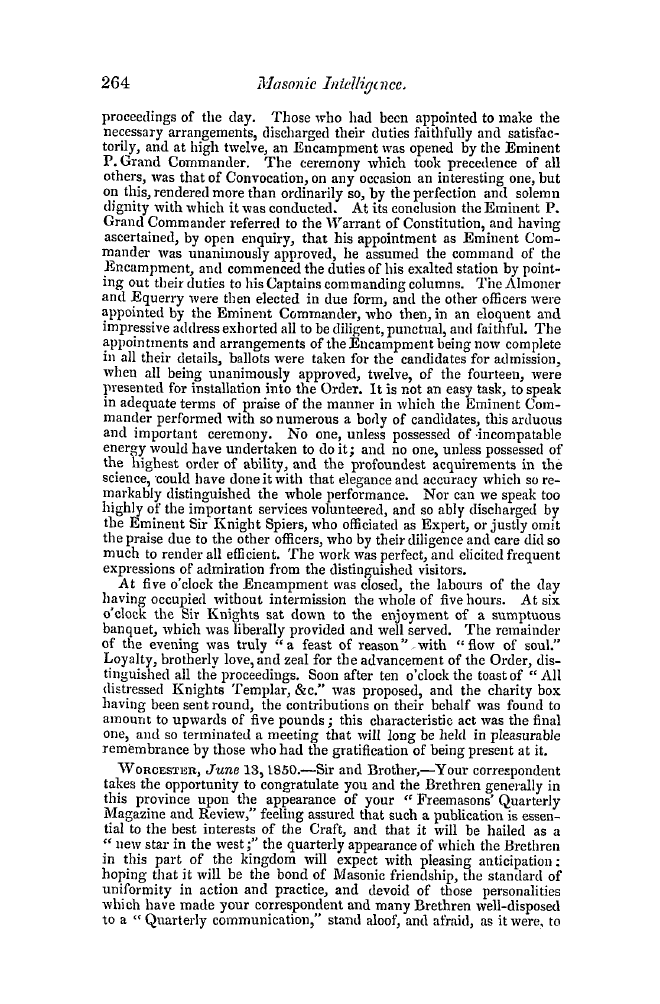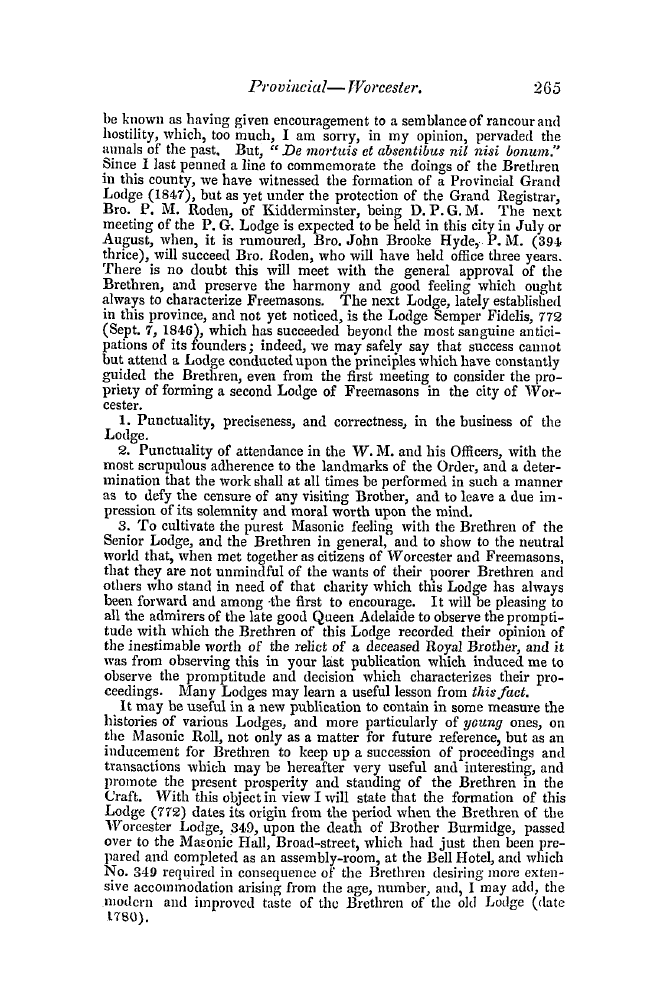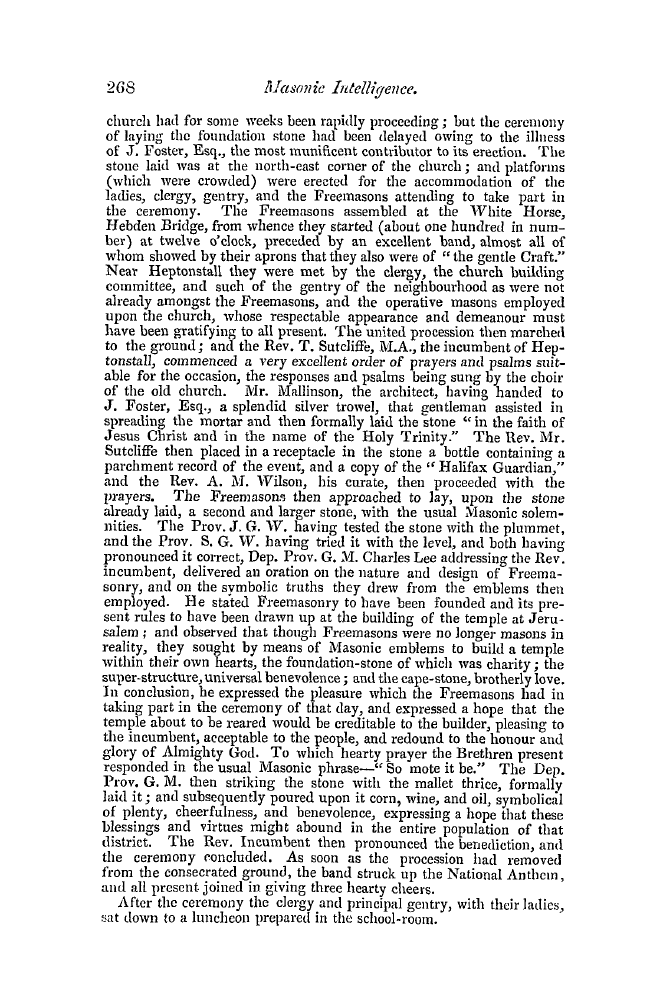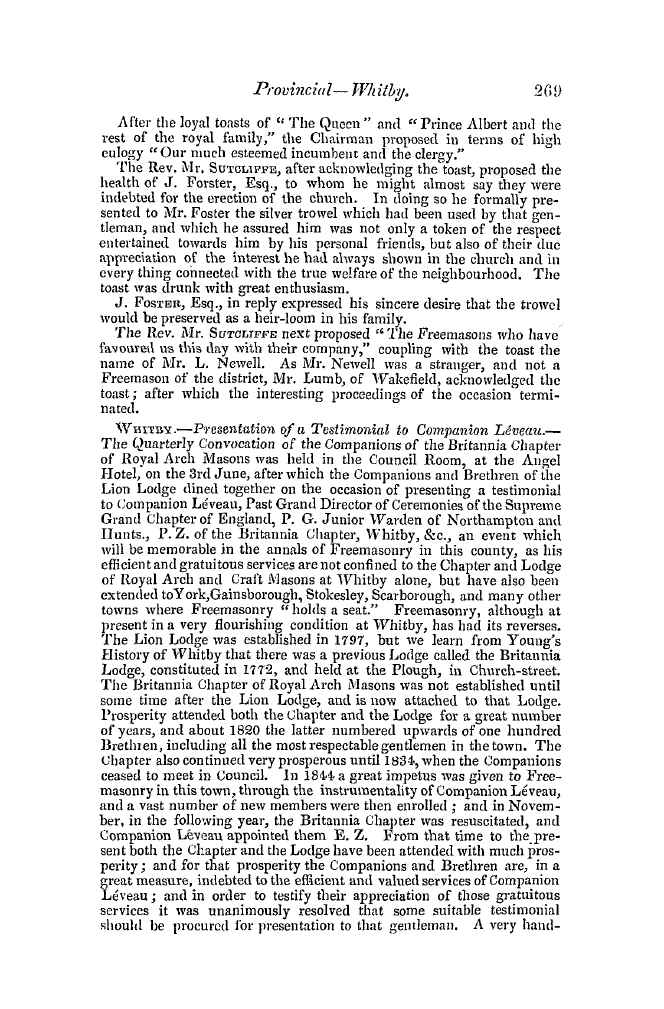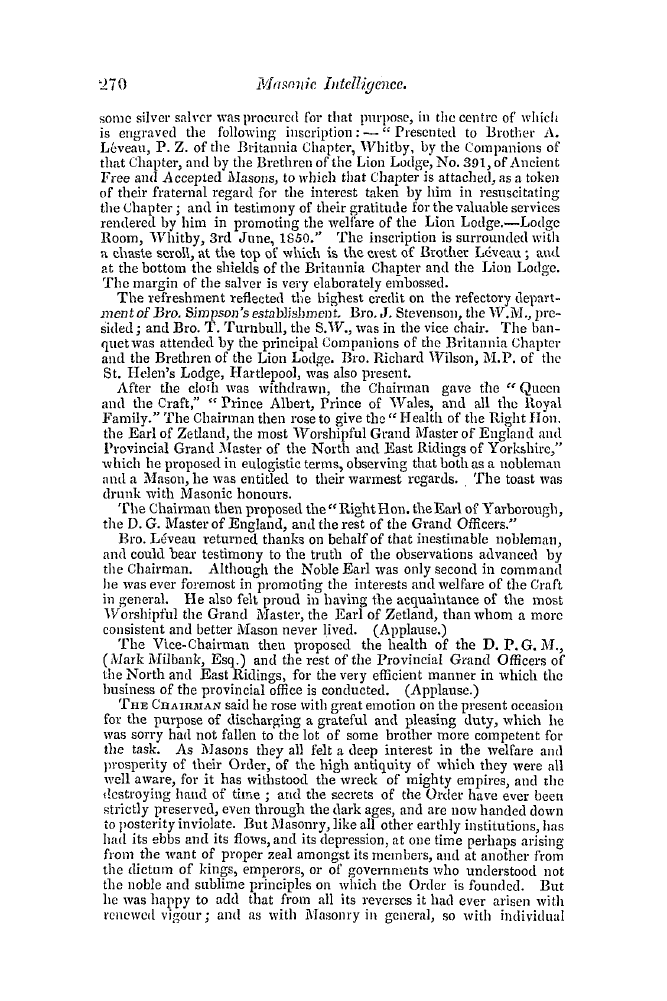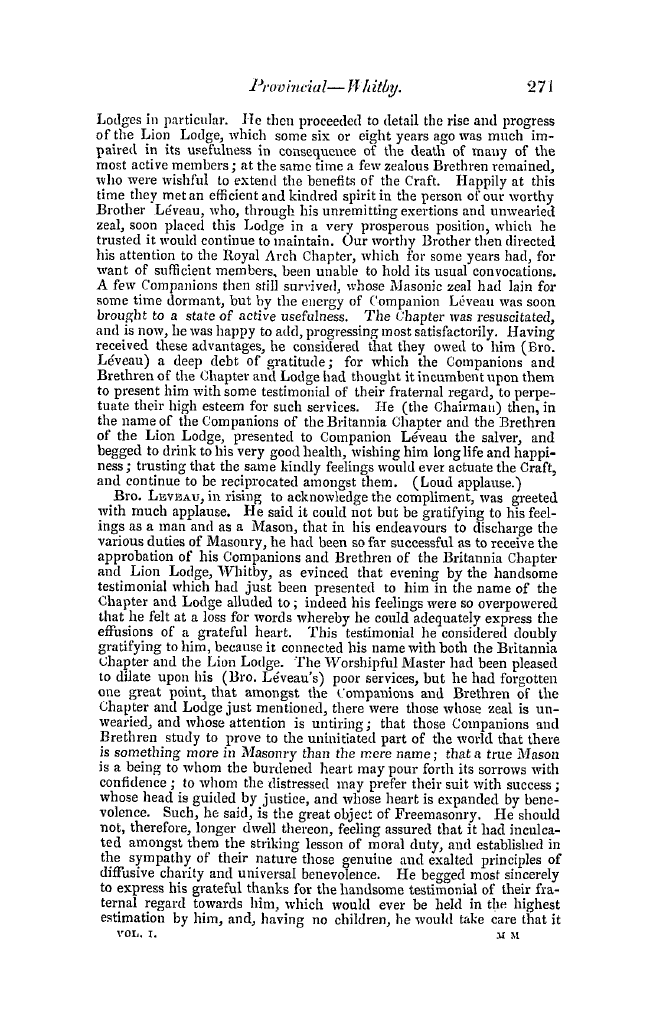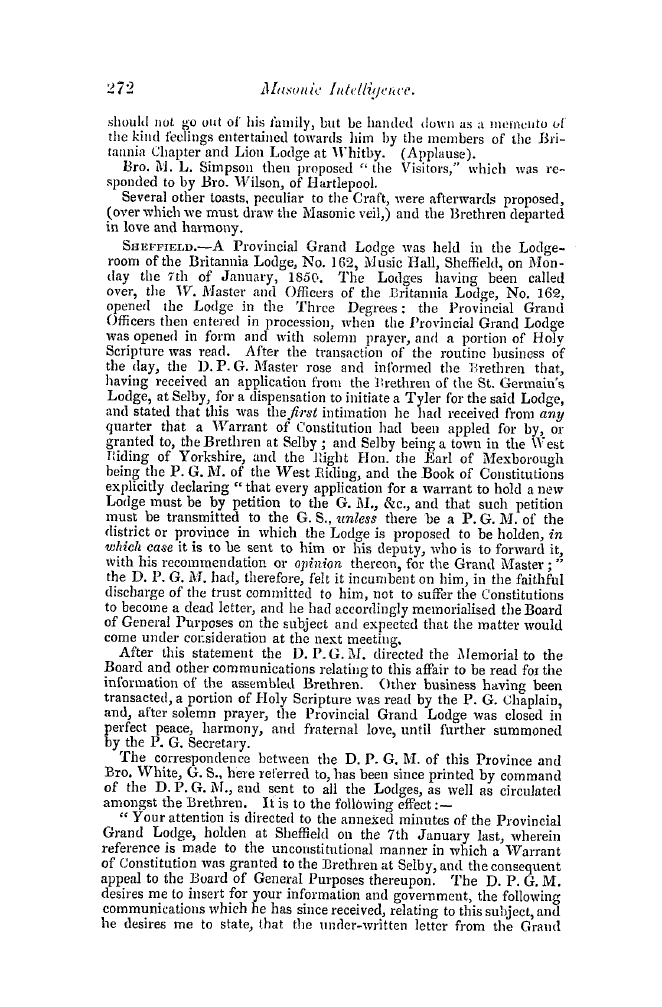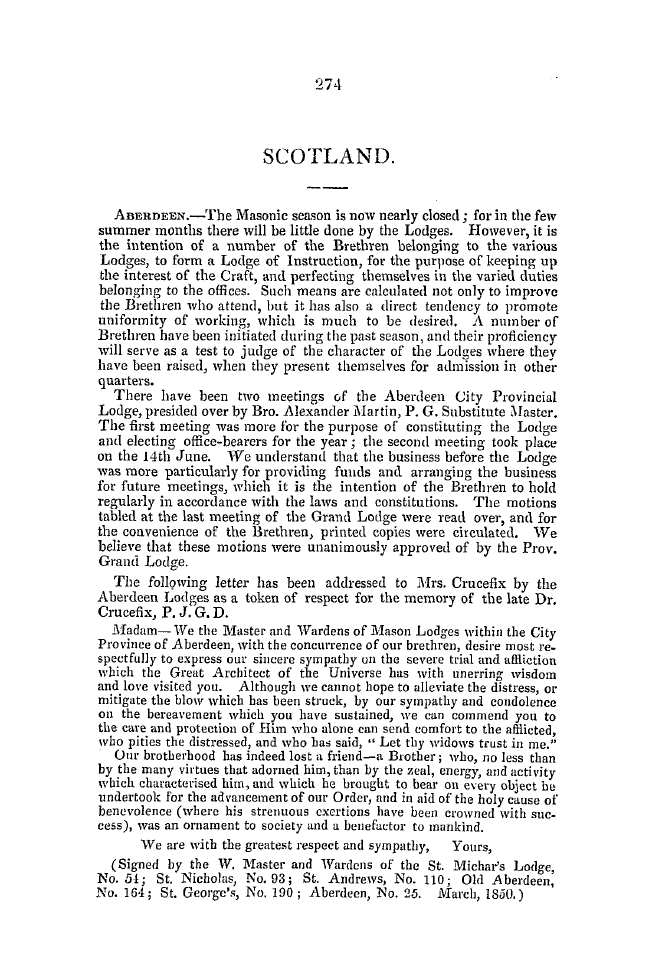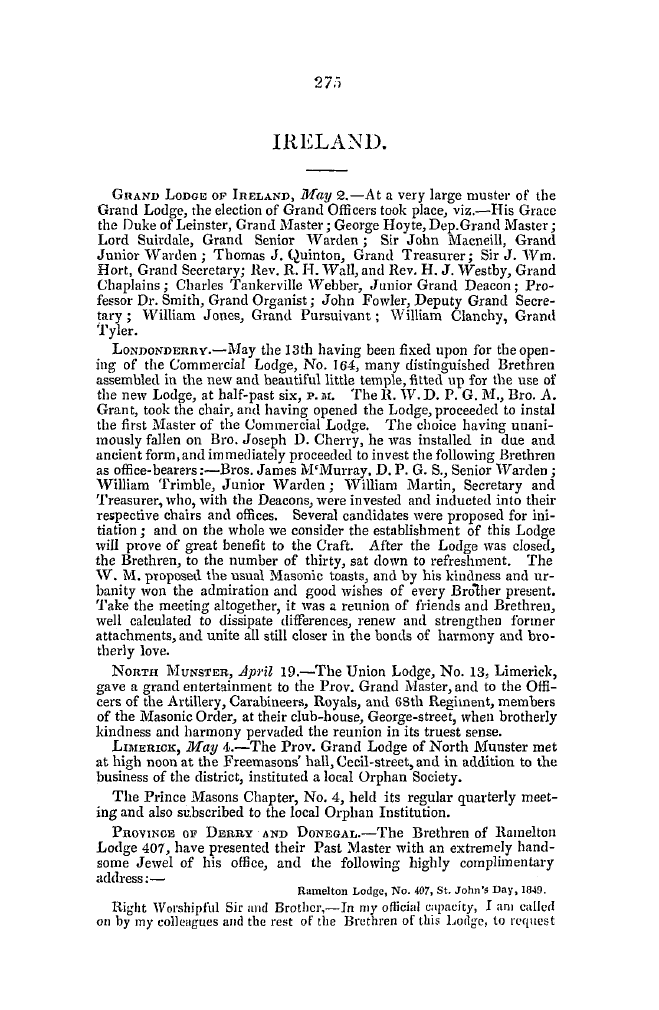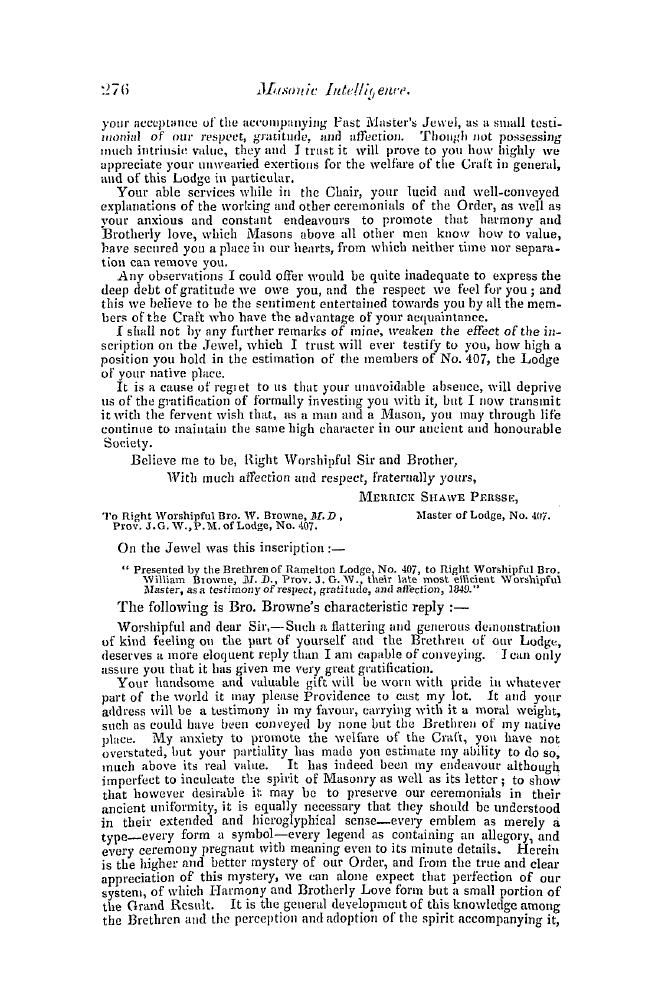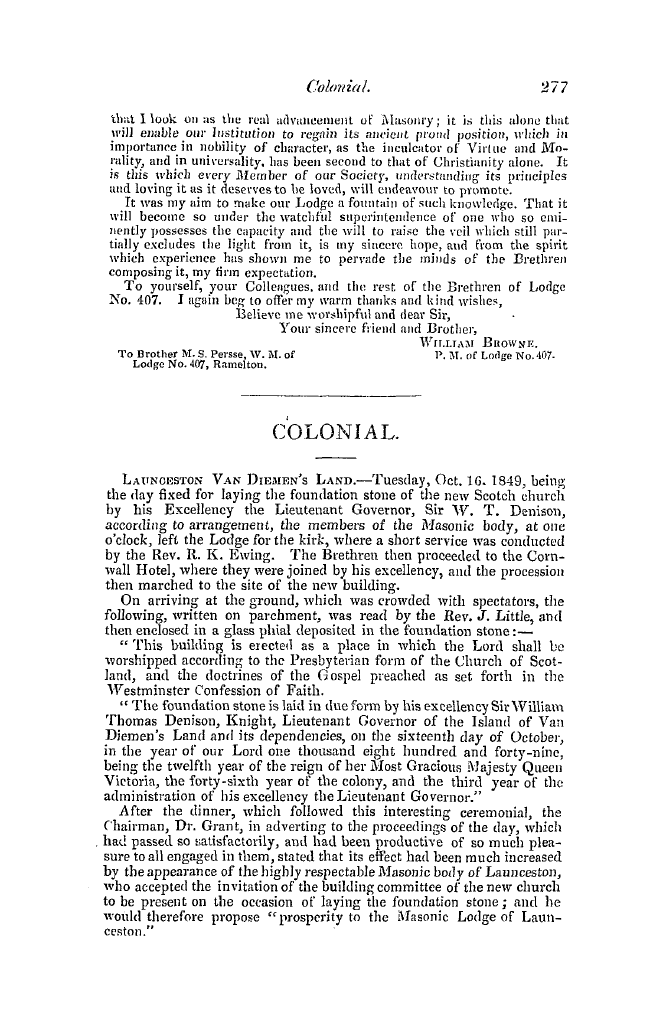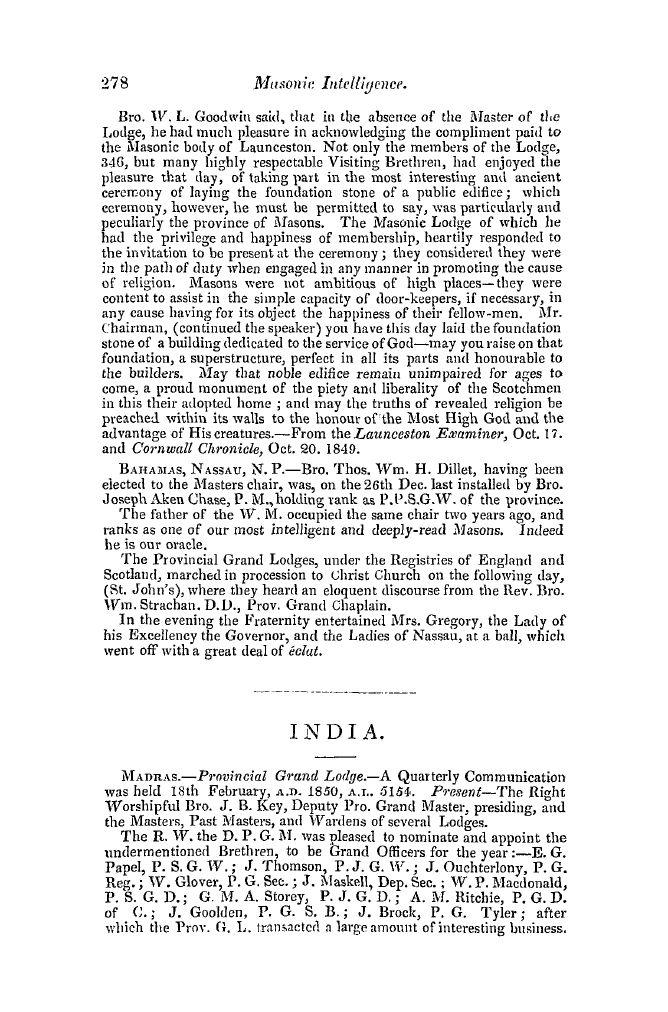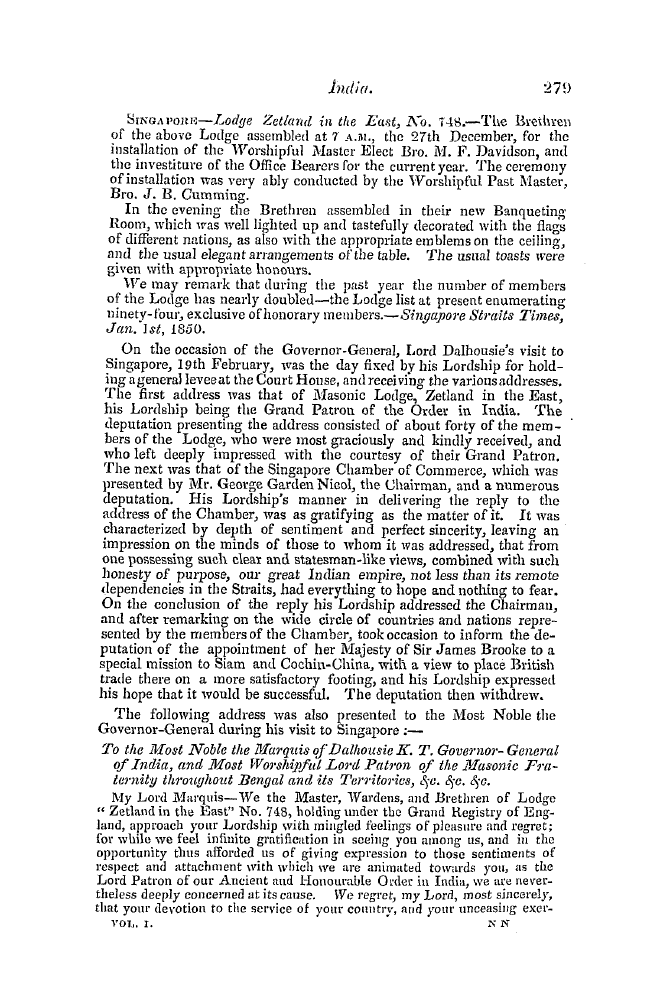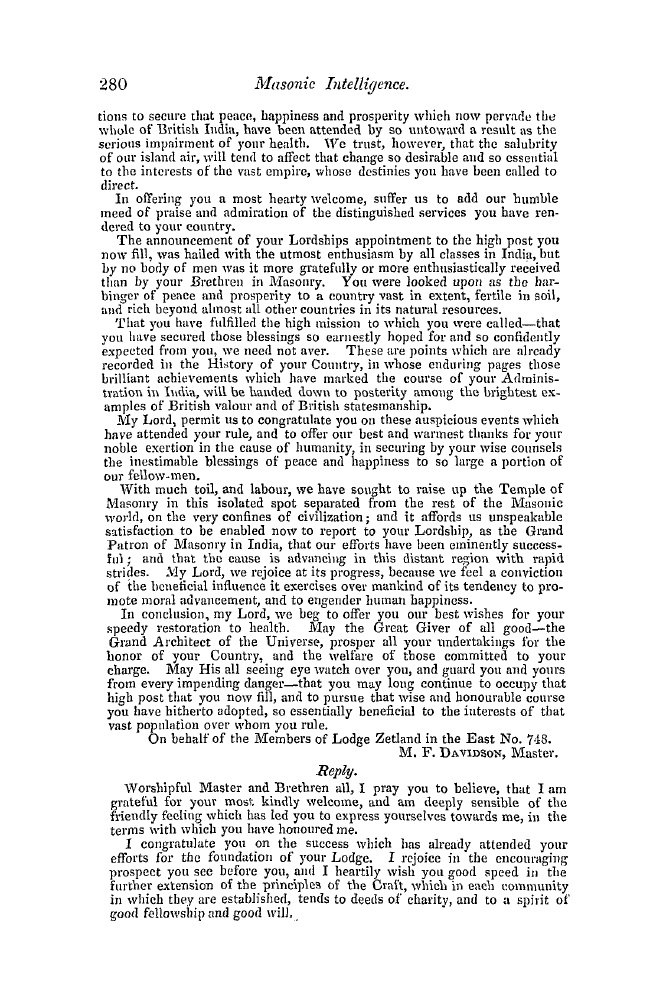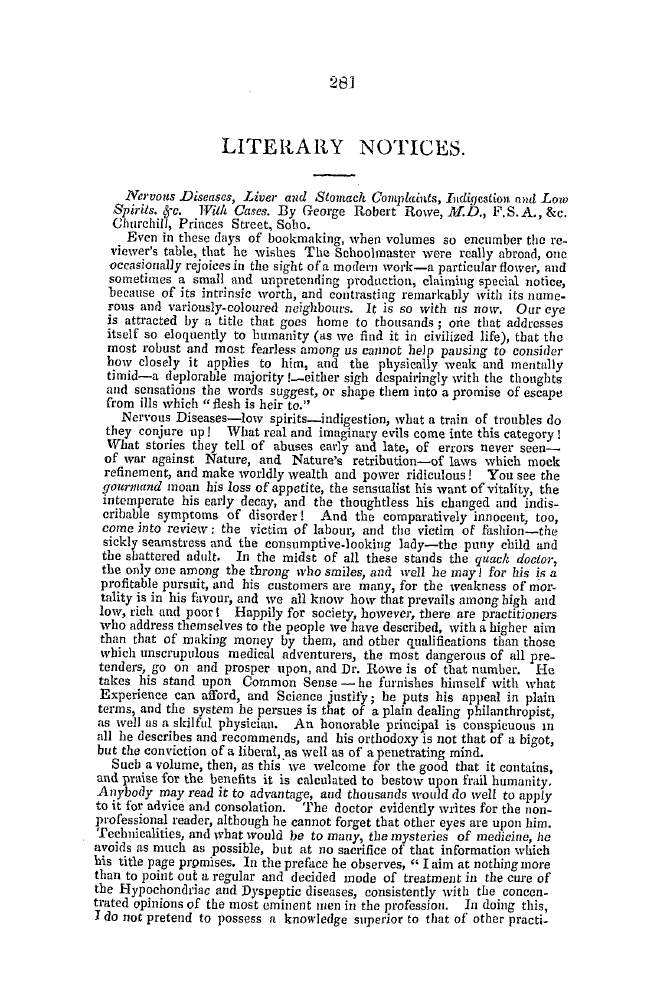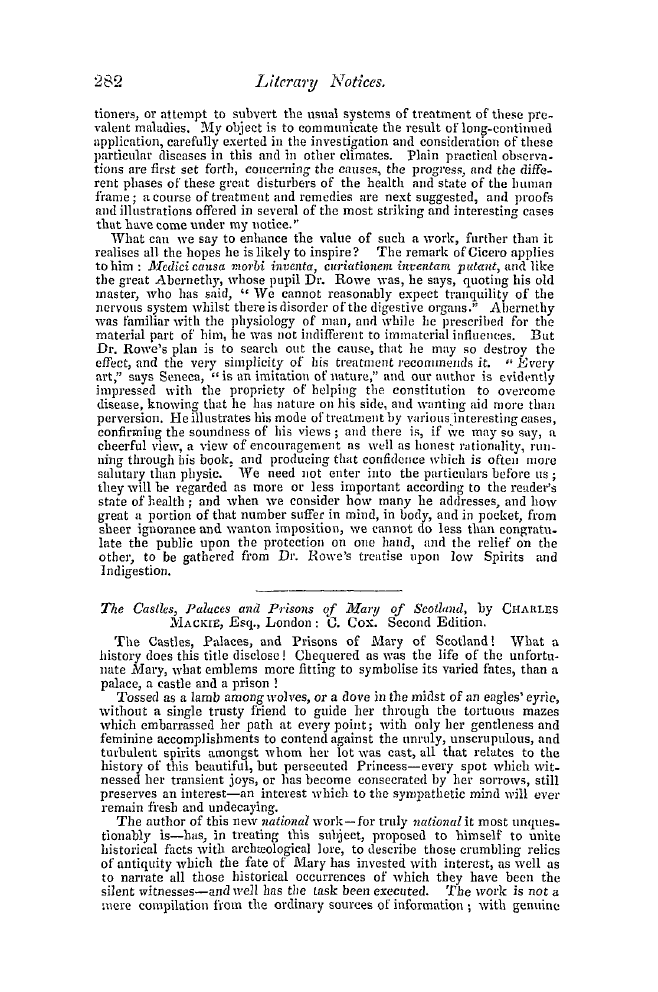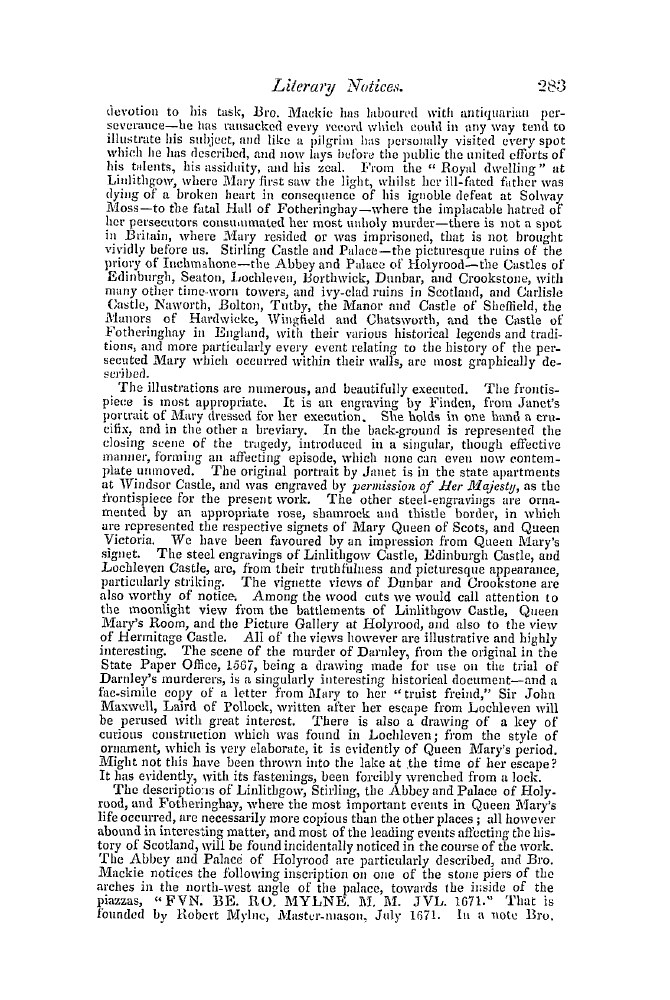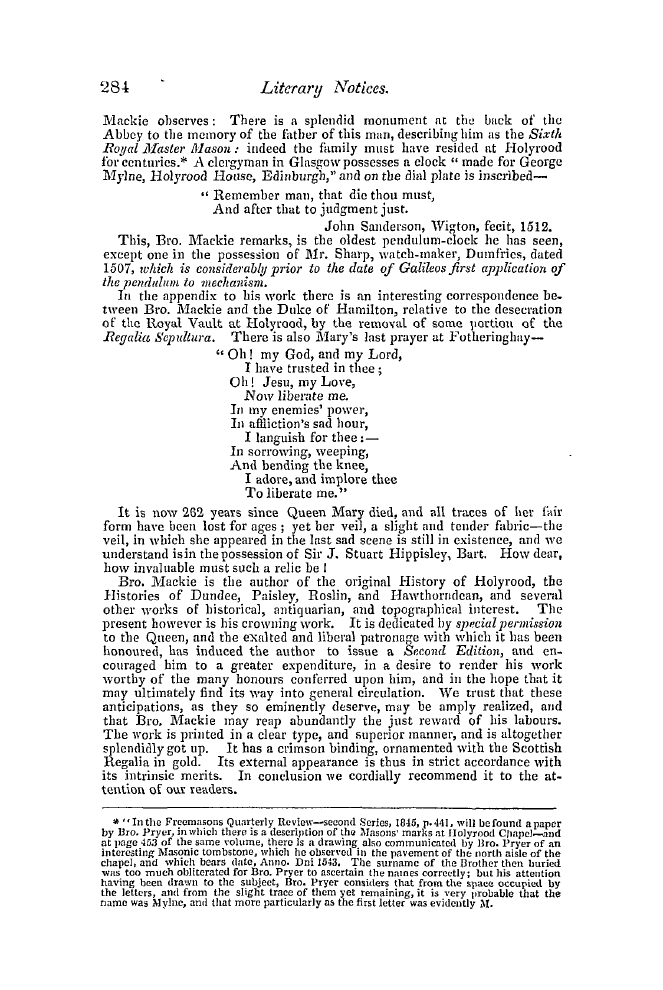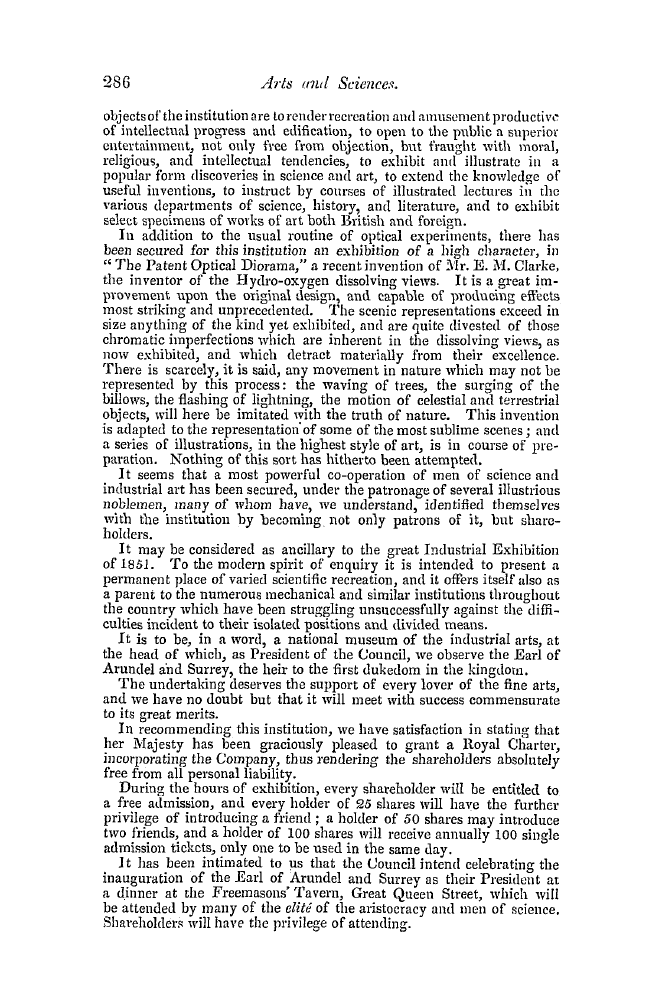-
Articles/Ads
Article LITERARY NOTICES. ← Page 3 of 5 →
Note: This text has been automatically extracted via Optical Character Recognition (OCR) software.
Literary Notices.
devotion to his task , Bro . Mackic has laboured with antiquarian perseverance—he lias ransacked every record which could in any way tend to illustrate his subject , and like a pilgrim has personally visited every spot which he has described , and now lays before the public the united efforts of his talents , his assiduity , and his zeal . From the " Royal dwelling " tit Linlithgow , where Mary first saw the light , whilst her ill-fated father was dying of a broken heart in consequence of his ignoble defeat at Sohvay
Moss—to the fatal Hall of Fotheringhay—where the implacable hatred of her persecutors consummated her most unholy murder—there is not a spot in Britain , where Mary resided or was imprisoned , that is not brought vividly before us . Stirling Castle and Palace—the picturesque ruins of the priory of Iuchmahone—the Abbey and Palace of Holyrood—the Castles of Edinburgh , Seaton , Lochleven , Borthwick , Dunbar , and Crookstone , with many other time-worn towers , and ivy-clad ruins in Scotland , and Carlisle CastleNaworthBoltonTutbthe Manor and Castle of Sheffieldthe
, , , y , , Manors of Hardwickc , AVingtield and Chatswovth , and the Castle of Fotheringhay in England , with their various historical legends and traditions , and more particularly every event relating to the history of the persecuted Mary which occurred within their walls , are most graphically described .
The illustrations are numerous , and beautifully executed . The frontispiece is most appropriate . It is an engraving by Finden , from Janet ' s portrait of Mary dressed for her execution . She holds in one hand a crucifix , and in the other a breviary . In the back-ground is represented the closing scene of the tragedy , introduced in a singular , though effective manner , forming an affecting episode , which none can even now contemplate unmoved . The original portrait by Janet is in the state apartments at AVindsor Castle , and was engraved by permission of Her Majesty , as the
frontispiece for the present work . The other steel-engravings are ornamented by an appropriate rose , shamrock and thistle border , in which are represented the respective signets of Mary Queen of Scots , and Queen Victoria . AVe have been favoured by an impression from Queen Mary's signet . The steel engravings of Linlithgow Castle , Edinburgh Castle , aud Lochleven Castle , are , from their truthfulness and picturesque appearance , particularly striking . The vignette views of Dunbar and Crookstone are also worthy of notice . Among the wood cuts we would call attention to the moonlight view from the battlements of Linlithgow Castle , Queen Mary's Room , and the Picture Gallery at Holyrood , and also to the view
ot Hermitage Castle . All ot the views however are illustrative and highly interesting . The scene of the murder of Darnley , from the original in the State Paper Office , 1567 , being a drawing made for use on the trial of Darnley's murderers , is a singularly interesting historical document—and a facsimile copy of a letter from Mary to her " truist freind , " Sir John Maxwell , Laird of Pollock , written after her escape from Lochleven will be perused with great interest . There is also a drawing of a key of curious construction which was found in Lochleven ; from the style of
ornament , which is very elaborate , it is evidently of Queen Mary's period . Might not this have been thrown into the lake at . the time of her escape ? It has evidently , with its fastenings , been forcibly wrenched from a lock . The descriptions of Linlithgow , Stirling , the Abbey and Palace of Holyrood , and Fotheringhay , where the most important events in Queen Mary's life occurred , are necessarily more copious than the other places ; all however abound in interesting matter , and most of the leading events affecting the history of Scotlandwill be found incidentallnoticed in the course of the work .
, y The Abbey and Palace of Holyrood are particularly described , and Bro . Mackie notices the following inscription on one of the stone piers of the arches in the north-west angle of the palace , towards the inside of the piazzas , "FVN . BE . RO . MYLNE . M . M . JVL . 1071 . " That is founded b y Robert Mylnc , Master-mason , July 1671 . Iu a note Bro .
Note: This text has been automatically extracted via Optical Character Recognition (OCR) software.
Literary Notices.
devotion to his task , Bro . Mackic has laboured with antiquarian perseverance—he lias ransacked every record which could in any way tend to illustrate his subject , and like a pilgrim has personally visited every spot which he has described , and now lays before the public the united efforts of his talents , his assiduity , and his zeal . From the " Royal dwelling " tit Linlithgow , where Mary first saw the light , whilst her ill-fated father was dying of a broken heart in consequence of his ignoble defeat at Sohvay
Moss—to the fatal Hall of Fotheringhay—where the implacable hatred of her persecutors consummated her most unholy murder—there is not a spot in Britain , where Mary resided or was imprisoned , that is not brought vividly before us . Stirling Castle and Palace—the picturesque ruins of the priory of Iuchmahone—the Abbey and Palace of Holyrood—the Castles of Edinburgh , Seaton , Lochleven , Borthwick , Dunbar , and Crookstone , with many other time-worn towers , and ivy-clad ruins in Scotland , and Carlisle CastleNaworthBoltonTutbthe Manor and Castle of Sheffieldthe
, , , y , , Manors of Hardwickc , AVingtield and Chatswovth , and the Castle of Fotheringhay in England , with their various historical legends and traditions , and more particularly every event relating to the history of the persecuted Mary which occurred within their walls , are most graphically described .
The illustrations are numerous , and beautifully executed . The frontispiece is most appropriate . It is an engraving by Finden , from Janet ' s portrait of Mary dressed for her execution . She holds in one hand a crucifix , and in the other a breviary . In the back-ground is represented the closing scene of the tragedy , introduced in a singular , though effective manner , forming an affecting episode , which none can even now contemplate unmoved . The original portrait by Janet is in the state apartments at AVindsor Castle , and was engraved by permission of Her Majesty , as the
frontispiece for the present work . The other steel-engravings are ornamented by an appropriate rose , shamrock and thistle border , in which are represented the respective signets of Mary Queen of Scots , and Queen Victoria . AVe have been favoured by an impression from Queen Mary's signet . The steel engravings of Linlithgow Castle , Edinburgh Castle , aud Lochleven Castle , are , from their truthfulness and picturesque appearance , particularly striking . The vignette views of Dunbar and Crookstone are also worthy of notice . Among the wood cuts we would call attention to the moonlight view from the battlements of Linlithgow Castle , Queen Mary's Room , and the Picture Gallery at Holyrood , and also to the view
ot Hermitage Castle . All ot the views however are illustrative and highly interesting . The scene of the murder of Darnley , from the original in the State Paper Office , 1567 , being a drawing made for use on the trial of Darnley's murderers , is a singularly interesting historical document—and a facsimile copy of a letter from Mary to her " truist freind , " Sir John Maxwell , Laird of Pollock , written after her escape from Lochleven will be perused with great interest . There is also a drawing of a key of curious construction which was found in Lochleven ; from the style of
ornament , which is very elaborate , it is evidently of Queen Mary's period . Might not this have been thrown into the lake at . the time of her escape ? It has evidently , with its fastenings , been forcibly wrenched from a lock . The descriptions of Linlithgow , Stirling , the Abbey and Palace of Holyrood , and Fotheringhay , where the most important events in Queen Mary's life occurred , are necessarily more copious than the other places ; all however abound in interesting matter , and most of the leading events affecting the history of Scotlandwill be found incidentallnoticed in the course of the work .
, y The Abbey and Palace of Holyrood are particularly described , and Bro . Mackie notices the following inscription on one of the stone piers of the arches in the north-west angle of the palace , towards the inside of the piazzas , "FVN . BE . RO . MYLNE . M . M . JVL . 1071 . " That is founded b y Robert Mylnc , Master-mason , July 1671 . Iu a note Bro .


























































